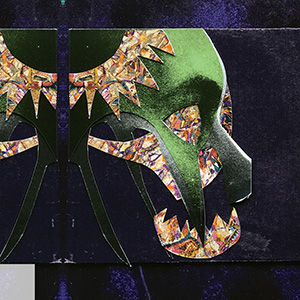 With two different releases in 2021, Jim Campbell (as Rrill Bell) follows up 2020's Ballad of the External Life going in two very different thematic directions. A cassette, False Flag Rapture, is a personal, intimate work based around a recording of his grandmother, while the digital (available with printed material as well) Blade’s Return is a narrative tale about a saw (I am not sure if it is truly meant to be anthropomorphic or not). Both feel rather different from each other, but both also feature the heavy tape manipulations of Campbell, reducing instrument recordings to raw material that he shapes into entirely different and unique forms.
With two different releases in 2021, Jim Campbell (as Rrill Bell) follows up 2020's Ballad of the External Life going in two very different thematic directions. A cassette, False Flag Rapture, is a personal, intimate work based around a recording of his grandmother, while the digital (available with printed material as well) Blade’s Return is a narrative tale about a saw (I am not sure if it is truly meant to be anthropomorphic or not). Both feel rather different from each other, but both also feature the heavy tape manipulations of Campbell, reducing instrument recordings to raw material that he shapes into entirely different and unique forms.
 With apologies to Laurie Speigel after whose album the label takes its name (and Sylvia Tarozzi), it must be said that solo piano is at the core of Unseen Worlds. Their standards are high, as evidenced by recent releases such as James Rushford's Musicá Collada/See The Welter and "Blue" Gene Tyranny’s Detours. Human Remains is Robert Haigh’s third (and best) release for the label. His composition and playing superbly balance immediacy and detachment. This balance places a subtle disguise or mystery over these compositions. I detect a similarity with the approach of Werner Herzog in many of whose films the audience is allowed to feel and react without heavy-handed close ups.
With apologies to Laurie Speigel after whose album the label takes its name (and Sylvia Tarozzi), it must be said that solo piano is at the core of Unseen Worlds. Their standards are high, as evidenced by recent releases such as James Rushford's Musicá Collada/See The Welter and "Blue" Gene Tyranny’s Detours. Human Remains is Robert Haigh’s third (and best) release for the label. His composition and playing superbly balance immediacy and detachment. This balance places a subtle disguise or mystery over these compositions. I detect a similarity with the approach of Werner Herzog in many of whose films the audience is allowed to feel and react without heavy-handed close ups.
Robert Haigh is well known to brainwashed, of course, as a veteran of the UK underground since around 1980 via Nurse With Wound, Omni Trio, Silent Storm, Sema, and Truth Club. He is a natural fit for Unseen Worlds since, as he has said, piano is at the root of all his compositions. My view is that his solo piano works should have him up to his ears in film commissions, as they are jammed to the gills with poignant and unfussy (or anti-virtuosic pieces) and imbued with an essential immediacy and detachment. On earlier records, Haigh has borrowed titles from film, such as "Juliet of The Spirits” and “Ipcress Girl,” so I am guessing that he would take on the right project. An excellent longer piece on Human Remains titled “Signs of Life” got me thinking about Werner Herzog—since he made a film of that name. Herzog has argued, in one of his more believable utterances, that filmmaking is about creating immediate and profound connections with people. Robert Haigh certainly makes music according to that axiom and seems also to follow another choice of the master filmmaker. In the book A Guide For The Perplexed, Herzog mentions his decision to not move the camera in too closely to an actor’s face, since it will be “more fascinating to the audience if they see you as big as an ant in the landscape.” He adds “I have never wanted to see an actor weep. I want to make the audience cry instead.”
 Discovering this London-based composer's adventurously psychedelic collages of traditional Greek music was one of 2021's great musical pleasures for me, so I was very eager to hear this ambitious double album follow up to Antiqua Graecia. As expected, it is a characteristically wonderful and unusual release, but it is also marks a detour away from Stamou's impressive run of Greek-themed albums. The theme of the aptly titled Monoliths is instead Stamou's attempt to "collide" the two sides of his working methods: live performances and studio work. By my estimation, it was a very successful collision, but it was mostly a behind-the-scenes one, as I would be hard pressed to determine where one approach starts and another begins. As a result, the more immediate and striking theme of the album for me as a listener is that each piece feels like an extended experiment in crafting an immersive, complexly layered sound world from just a single recognizable instrument. At least, that is how Monoliths unfolds for its first half, as the bottom drops out of the album's hallucinatory feast of bells, organs, and steel drums to reveal a considerably more processed, abstract, and psychotropic second hour of drone-damaged mindfuckery. That approach admittedly makes Monoliths a bit less accessible than some of Stamou’s more conventionally melodic work, but serious heads looking for a deep and sustained dive into otherworldly psych meditations will likely love this immersive tour de force.
Discovering this London-based composer's adventurously psychedelic collages of traditional Greek music was one of 2021's great musical pleasures for me, so I was very eager to hear this ambitious double album follow up to Antiqua Graecia. As expected, it is a characteristically wonderful and unusual release, but it is also marks a detour away from Stamou's impressive run of Greek-themed albums. The theme of the aptly titled Monoliths is instead Stamou's attempt to "collide" the two sides of his working methods: live performances and studio work. By my estimation, it was a very successful collision, but it was mostly a behind-the-scenes one, as I would be hard pressed to determine where one approach starts and another begins. As a result, the more immediate and striking theme of the album for me as a listener is that each piece feels like an extended experiment in crafting an immersive, complexly layered sound world from just a single recognizable instrument. At least, that is how Monoliths unfolds for its first half, as the bottom drops out of the album's hallucinatory feast of bells, organs, and steel drums to reveal a considerably more processed, abstract, and psychotropic second hour of drone-damaged mindfuckery. That approach admittedly makes Monoliths a bit less accessible than some of Stamou’s more conventionally melodic work, but serious heads looking for a deep and sustained dive into otherworldly psych meditations will likely love this immersive tour de force.
The opening "Bells Drone" sounds deceptively like it could be layered field recordings of wind chimes at first, as bells of different sizes amiably jangle and clang for couple minutes before any real evidence of Stamou's hand starts to emerge. Soon, however, some tones start to linger supernaturally and the mood darkens into uneasy shadows of dissonance. It is quite a wonderfully hallucinatory and entrancing piece, evoking an ancient ritual in a cavernous subterranean temple revealed behind a dissolving reality. While it is the shortest piece on the album at a mere 13 minutes, it is nevertheless a solid representation of the album’s first half: a simple and minimal theme gradually transforms into a vividly multi-dimensional dream world. On "Chord Organ #2," for example, an organ drone slowly evolves into a Catherine Christer Hennix-esque nightmare of dark harmonies before unexpectedly resolving on a note of sundappled transcendence. "Steel Drum Drone," on the other hand, steadily becomes something akin to a lovesick tropical Steve Reich. That one is another favorite, as I am quite impressed with how Tasos weaves together patterns of plinking and bleary steel drum melodies into a thing of woozy multi-layered beauty.  In fact, I love every single one of the opening three pieces, but they turn out to be a mere prelude to two pieces in which Tamou goes totally bananas. In the first, "Supernormal," Stamou mingles a chirping electronic drone with squealing and sliding strings en route to an harrowing mindfuck that calls to mind a goddamn demon summoning (the final stretch of oscillating synth thrum is especially choice). The closing "Synapse" improbably features some even more gnarly sounds, passing though such colorful stages like "menacingly gelatinous bass throb," "an undead gamelan ensemble wanders the deserted streets in search of their next victim," and "a simmering and intense prepared piano performance over quasi-industrial rhythmic loops." This is an absolute feast of an album: five great longform pieces in a row spanning nearly two hours. Most days, I admittedly prefer the more meditative/ritualistic first half to the more nightmarish second half, but Stamou was swinging for the fences with every single piece on this album and the result is a monolithically stellar release.
Samples can be found here.
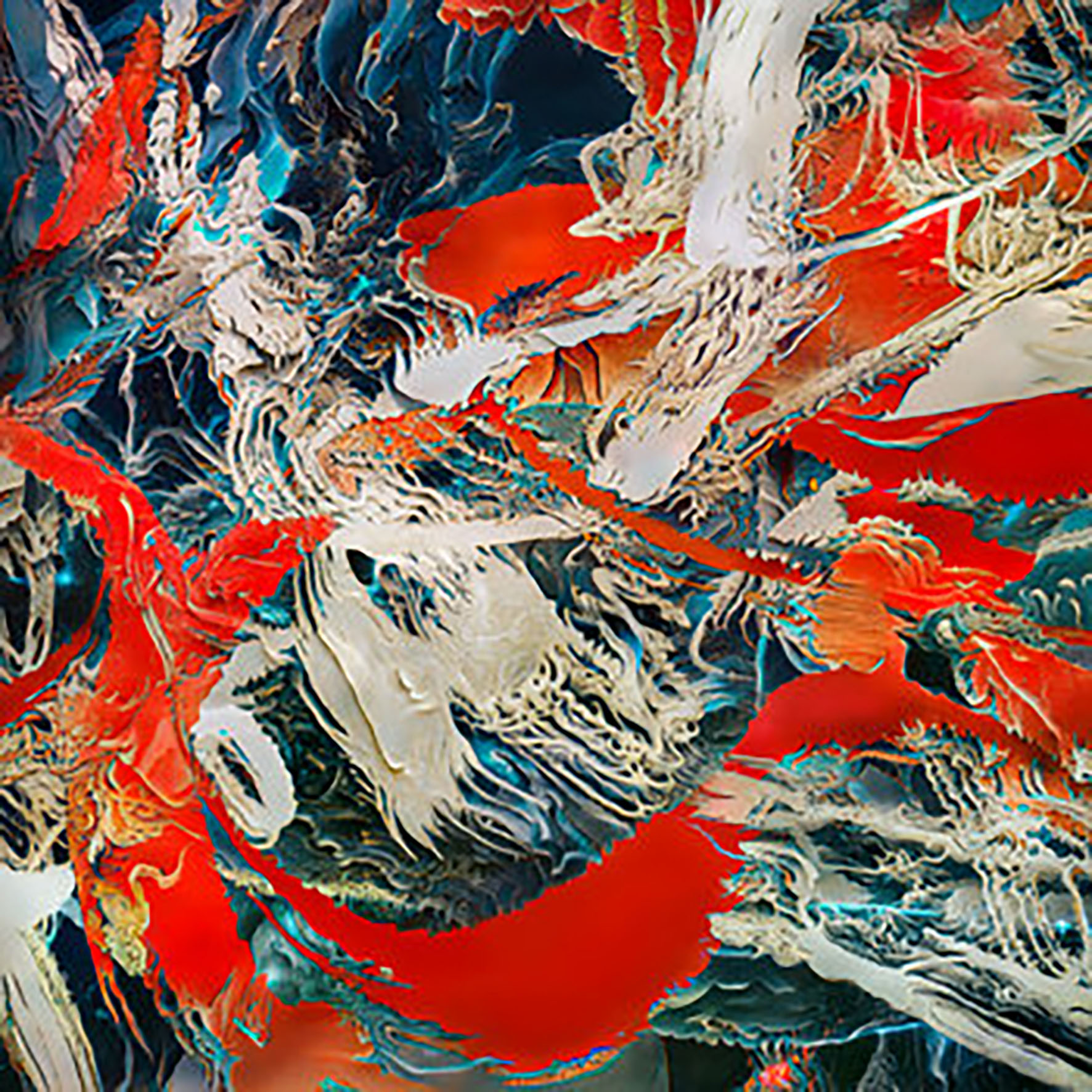 At this point, I consider myself quite well accustomed to Markus Popp's penchant for bold stylistic reinventions, yet this latest album managed to completely blindside me nevertheless. To be fair, however, Ovidono is not quite a pure Oval album, as Popp is joined by return collaborator Eriko Toyoda and artist/actress Vlatka Alec. The latter, in fact, is responsible for the album's concept: transforming the poetry of Ovid and Ono No Komachi into sound art that evokes "the tactile, immersive quality and intimacy of ASMR." The trio definitely succeeded in that regard, as Ovidono is probably the finest ASMR-inspired album that I have yet heard, but it is also a bit more ambitious than just a hallucinatory swirl of hushed and sibilant voices. Obviously, that would have been just fine by me too, as Popp is an absolute wizard at chopping and reassembling sounds. However, Ovidono is also quite compelling compositionally, as Alec and Toyoda's voices are backed by music that lies somewhere between noirish torch song, deconstructed piano jazz, and the uneasy dissonances of Morton Feldman.
At this point, I consider myself quite well accustomed to Markus Popp's penchant for bold stylistic reinventions, yet this latest album managed to completely blindside me nevertheless. To be fair, however, Ovidono is not quite a pure Oval album, as Popp is joined by return collaborator Eriko Toyoda and artist/actress Vlatka Alec. The latter, in fact, is responsible for the album's concept: transforming the poetry of Ovid and Ono No Komachi into sound art that evokes "the tactile, immersive quality and intimacy of ASMR." The trio definitely succeeded in that regard, as Ovidono is probably the finest ASMR-inspired album that I have yet heard, but it is also a bit more ambitious than just a hallucinatory swirl of hushed and sibilant voices. Obviously, that would have been just fine by me too, as Popp is an absolute wizard at chopping and reassembling sounds. However, Ovidono is also quite compelling compositionally, as Alec and Toyoda's voices are backed by music that lies somewhere between noirish torch song, deconstructed piano jazz, and the uneasy dissonances of Morton Feldman.
The opening "Dormant" does a fine job of setting a suitably bleary, haunted, and hallucinatory mood, as tumbling minor key piano melodies cast a spell of unease beneath a flickering swirl of ghostly whispers. The music reminds me a bit of some of the prepared piano pieces from Aphex Twin's Drukqs, but a more fluid and melodically sophisticated version. If Ovidono was simply nine subtly nightmarish piano miniatures in the same vein, it would probably be a legitimately excellent album, but "Dormant" feels like a goddamn masterpiece with the added layers of Alec and Toyoda's seductively hissing, popping, and clicking voices panning around my head. Wisely, Popp does not make any drastic changes to that winning formula for the other pieces, but he does vary the tone enough to give each piece its own distinct character. For example, the second piece ("Lost in Thought") features ghostly flutes and vocals of a more stammering and fluttering nature that seem to dissolve into a rain of clicks and pops. "As I Do" is a bit more of a departure, however, as it initially feels like I am trapped inside a haunted music box with a conspiratorial Japanese ghostess. As it progresses, however, it becomes increasingly spacy and blossoms into an immersively chiming and quivering fantasia of harp-like sweeps and Gilli Smyth-style space whispers. Yet another highlight is "Feeling," which evokes a melancholy pianist sadly twinkling his way across the keys in a nearly empty, neon-lit bar (a scene nicely enhanced by the hushed and flickering voices burrowing psychotropically into my subconscious). The closing "Over" is another personal favorite, as Popp's piano takes a brighter tone that is further warmed by shimmering and droning strings. It has a simple straightforward beauty that I do not normally associate with Popp's work, but I quite like it and the sibilant swirl of sensuous voices around it makes for good company. The remaining pieces are all similarly strong and offer their own twists, so I expect some of them will someday become favorites as well. Then again, I cannot foresee myself ever having much urge to single out an individual piece, as this entire goddamn album is brilliant.
Samples can be found here.
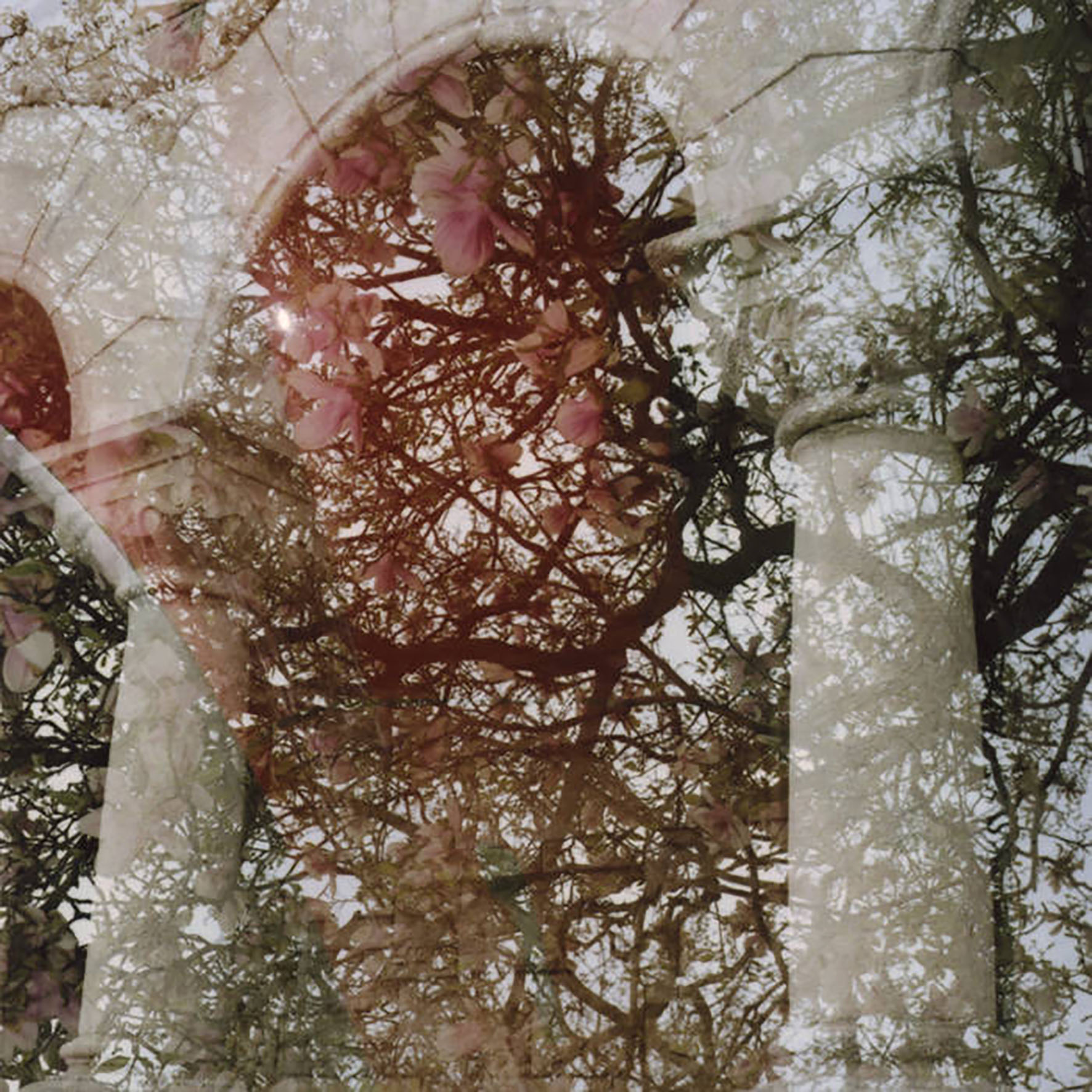 This lovely and unexpected collaboration was quietly released digitally in November with no background information provided at all, but it is probably safe to say that it was recorded quite recently, as it shares a lot of common ground with the radiant drones of Growing's Diptych (2021). That, of course, also means that Gainer can sometimes feel like a welcome throwback to "classic Kranky" era drone artists like Stars of the Lid, though each piece ultimately blossoms into something more ambitious and distinctive by the end. That drone-heavy aesthetic sometimes makes figuring out where Lattimore fits in quite a challenge, as recognizable harp sounds are a bit of a rarity amidst the smoldering bass thrum and ambient shimmer. Then again, recognizable guitar and bass sounds are not exactly rampant either, so maybe all three artists opted for elegantly blurred impressionist abstraction. In any case, whatever they did worked quite well, as Lattimore and Growing's two aesthetics bleed together quite nicely and often feel like something greater than the mere sum of their parts (or at least like a very good Growing album beautifully enhanced with subtle acoustic shadings and flickers of melody).
This lovely and unexpected collaboration was quietly released digitally in November with no background information provided at all, but it is probably safe to say that it was recorded quite recently, as it shares a lot of common ground with the radiant drones of Growing's Diptych (2021). That, of course, also means that Gainer can sometimes feel like a welcome throwback to "classic Kranky" era drone artists like Stars of the Lid, though each piece ultimately blossoms into something more ambitious and distinctive by the end. That drone-heavy aesthetic sometimes makes figuring out where Lattimore fits in quite a challenge, as recognizable harp sounds are a bit of a rarity amidst the smoldering bass thrum and ambient shimmer. Then again, recognizable guitar and bass sounds are not exactly rampant either, so maybe all three artists opted for elegantly blurred impressionist abstraction. In any case, whatever they did worked quite well, as Lattimore and Growing's two aesthetics bleed together quite nicely and often feel like something greater than the mere sum of their parts (or at least like a very good Growing album beautifully enhanced with subtle acoustic shadings and flickers of melody).
The album is divided into two longform pieces that each clock in around 16 or 17 minutes. The opening "Flowers in the Center Lane Sway" fades quietly into being with a slow melody of harmonic-like swells. Around the 2-minute mark, however, the piece unexpectedly blossoms into a far more harmonically and texturally rich chord progression. Given that this partially a Growing album, there is a healthy amount of amplifier hum and buzzing drone waves as well, which provides a pleasantly bleary and immersive backdrop for a simple, seesawing melody that evokes the faint streaks of light from the final moments of a vivid sunset. Occasionally, there is a hint of audible harp or the sensation of something harp-like moving amidst the hum, but Lattimore finally appears in earnest for the piece's final third to add rippling and ephemeral arpeggios that feel like glimpses of twinkling stars in the gaps between passing clouds. As all that happens, the piece sneakily accumulates a pleasantly heaving and hypnotic pulse as well, which is a damn neat trick. It is solid piece, but the following "Tagada, Night Rises" is both stronger and more distinctive. Lattimore initially seems to be steering the ship for the piece, as quivering webs of arpeggios streak lazy trails across a smoldering backdrop of bass drone. Rather than feeling like it is evolving toward something larger, however, the piece lingers in a warm and glimmering dreamscape akin to a state of suspended animation (though the bass drone does seem to be stealthily building in intensity throughout the piece). "Tagada" takes a surprise detour around the halfway point though, as it feels like a menacing vibrato has curdled the bass drone and cast a shadow of uneasy dissonance across everything. That darkening paves the way for yet another composition trick, however, as the piece slowly brightens for a warmly lovely crescendo of woozy and quavering guitar and harp motifs before ending with unexpectedly gorgeous outro that feels like dark birds silhouetted by a deep red sunset. While I suspect both pieces will resonate more with fans of Growing's dronier side than with Lattimore's own fanbase, Gainer is both an impressively organic/seamless convergence of visions and a sustained, quietly beautiful reverie.
Samples can be found here.
 I don’t know exactly what synth-like equipment Robert Takahashi Crouch uses to generate these sounds and maneuver them into place, but these three pieces are very impressive. This is an album of abstract music and it is useful for reference to have detailed context of Crouch's personal challenges and struggle as outsider, victim, self-destructor, or whatever. I read those between my first and second listens to Jubilee and it definitely helped.
I don’t know exactly what synth-like equipment Robert Takahashi Crouch uses to generate these sounds and maneuver them into place, but these three pieces are very impressive. This is an album of abstract music and it is useful for reference to have detailed context of Crouch's personal challenges and struggle as outsider, victim, self-destructor, or whatever. I read those between my first and second listens to Jubilee and it definitely helped.
The opening track "Ritual" has a tense vibe and a sense of emotional heavy lifting is achieved by huge slabs of grinding, vibrating, texture, which emerge and then blend or get overlaid like shifting tectonic plates of sound. There is a weird feeling of aggression, but this feels turned inward rather than aimed at the listener. I felt involved with the music but it also came over as both detached and claustrophobic. An odd pair of descriptors, perhaps, but I hear Jubilee not unlike how I see the doomed grey void of the Rothko Chapel: it drew me in but kept me at arms length). According to Crouch's contextual notes, the next track “I have been part of evil doing” is an acknowledgement that even the abused may do "bad" things to others which they come to regret. This shorter work, which takes it’s title from “People Like Us” a 2007 record by The Dears, has a calmer, gentler, softer, air - an excellent variation against the weightier “Ritual.” This quite lighter mood leads perfectly into “Reconciliation” which is just as beautiful. This final track begins with the recounting of a survived bridge suicide attempt in a sample from a poem by Ted Berrigan from the 1975 record The Dial-a-Poem Poets: Biting Off The Tongue of a Corpse. The placement of a human voice here is another fine contrast, and the somber tone and graceful pace of "Reconciliation" succeeds in uniting the whole album with a powerful renewal of hope and forgiveness (especially the latter). The three sections together make Jubilee a really coherent and satisfying recording, located betwixt sound installation art and electronic expressionism, with an emotional edge that gives it a tangible feeling of integrity and maybe even hope for personal growth.
This is a fine album which I would prefer to listen to again than revisit the Rothko chapel (though I love Rothko's other works). In fact I have already heard Jubilee six or seven times, despite the title being a reference to a work by the so-called anarchist poet (with a trust fund) Hakim Bey to whose writing I have a strong aversion. To call him a juvenile imitation of William Burroughs would be flattery. It is certainly possible to view him as an incoherent creep, spinning deceitful tips for weekend rebels or oozing his pitiful justifications for pedophilia like puss from an open wound. It is debatable whether his blather is worse than the illogical, pseudo-freedom loving gasbag rambles of Ron and Rand Paul when they butter-up their constituents with easily-decoded defenses of racism. I personally can't stomach a message of forgiveness from any of them and the fact that Andrei Codrescu got suckered into feting Bey also does nothing for my digestion. Thankfully all this is merely a matter of opinion, perhaps worthless, certainly available free on the internet as is the entirety of Bey's writing. Crouch's record is worth more.
 
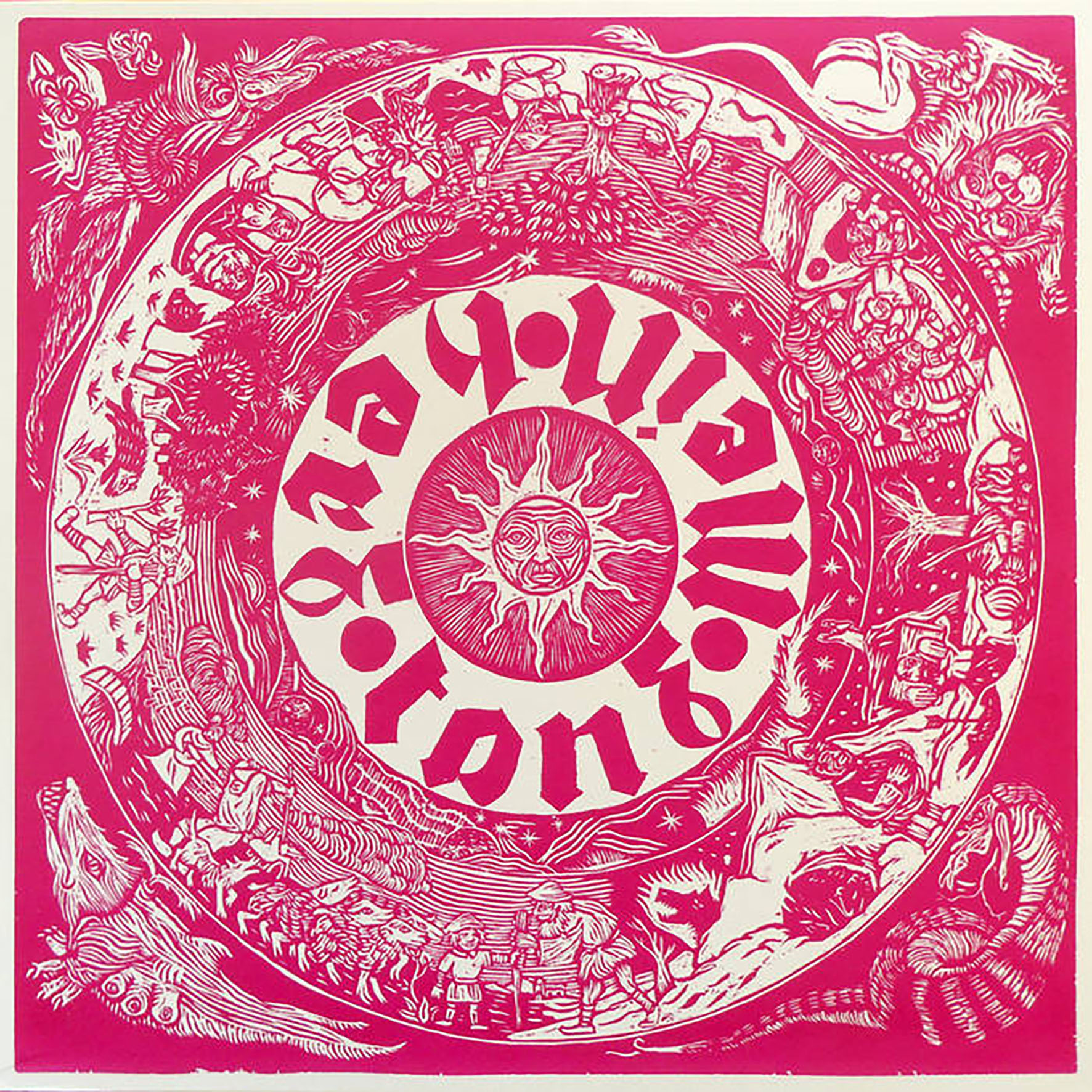 I began 2021 not knowing a single goddamn thing about Jeremie Sauvage, the Standard In-Fi label, or France's fascinating Auvergnat/avant-folk milieu, but I am certainly ending the year as a somewhat obsessed fan. Weirdly, this year was not an especially prolific year for the milieu, though Yann Gourdon and Sourdure had fresh releases, yet this album, the Sourdure album, and a pair of France reissues seemed to reach a lot more ears than usual and two of those ears were mine. The linguistically astute may successfully deduce that Quattro is Tanz Mein Herz's fourth album, but details beyond that are minimal and the recordings actually date from a two-day "public recording session" back in 2016 (the band's entire discography seems to have been recorded between 2014 and 2016, in fact). There is also some poetic information provided in French that makes repeated references to drones, vibrations, resonance, infinity, suspension, immensity, and a "pendulum of dreams," which I found both apt and predictably alluring. Admittedly, many of those descriptors could also apply to a host of disappointing drone albums, but I suspect the "pendulum of dreams" bit is probably the secret ingredient that makes this particular album so transcendent. That said, Quattro can also be quite challenging at times, but it unquestionably captures a very unusual acoustic drone ensemble at the very height of their eclectic and hypnotic powers, so it invariably winds up somewhere compelling no matter how prickly the voyage may become along the way.
I began 2021 not knowing a single goddamn thing about Jeremie Sauvage, the Standard In-Fi label, or France's fascinating Auvergnat/avant-folk milieu, but I am certainly ending the year as a somewhat obsessed fan. Weirdly, this year was not an especially prolific year for the milieu, though Yann Gourdon and Sourdure had fresh releases, yet this album, the Sourdure album, and a pair of France reissues seemed to reach a lot more ears than usual and two of those ears were mine. The linguistically astute may successfully deduce that Quattro is Tanz Mein Herz's fourth album, but details beyond that are minimal and the recordings actually date from a two-day "public recording session" back in 2016 (the band's entire discography seems to have been recorded between 2014 and 2016, in fact). There is also some poetic information provided in French that makes repeated references to drones, vibrations, resonance, infinity, suspension, immensity, and a "pendulum of dreams," which I found both apt and predictably alluring. Admittedly, many of those descriptors could also apply to a host of disappointing drone albums, but I suspect the "pendulum of dreams" bit is probably the secret ingredient that makes this particular album so transcendent. That said, Quattro can also be quite challenging at times, but it unquestionably captures a very unusual acoustic drone ensemble at the very height of their eclectic and hypnotic powers, so it invariably winds up somewhere compelling no matter how prickly the voyage may become along the way.
I am not sure how constant Tanz Mein Herz's line-up is (or was), but at the time of the Quattro sessions they were a seven-piece ensemble and damn near everyone involved has ties to some other notable project (France, Toad, Sourdure, La Baracande, Faune, Omertà, etc.). I suppose that makes this project some kind of fitfully convening all-star team that brings together all the best threads of a flourishing scene, which seems to unexpectedly be a winning formula these days if one also considers Enhet För Fri Musik. In any case, Quattro consists of six pieces that stretch across four sides of vinyl and most of them are quite long (even the shortest piece ("Outro") clocks in at over seven minutes). In a surprise twist, my favorite piece is among the album's shorter ones, as "Tales From the Middle of the Night" crams a hell of a lot of brilliance into just over ten minutes. The piece is built upon a repeating marimba-like melody and heavy buzzing drones, but it does not take long before it blossoms into a mind-bending phantasia of sliding, smeared, and howling strings that calls to mind La Monte Young’s Theatre of Eternal Music trying their hand at exotica (yet another winning formula, for those keeping score). As it unfolds, however, it only gets improbably better and better and burrows deeper into my mind, which is exactly what I want from psychotropic drone (and I would be hard pressed to think of anyone else who does it quite this well).
Remarkably, the only real difference between that highlight and the rest of the album is merely that the other pieces simply take a bit longer to truly catch fire. For example, the 20-minute "Magical Stones and Shiny Mud" starts off on a somewhat unpromising cacophony of bagpipe-y drones and flutes, then detours into a radiant and languorous drone-rock groove. I initially suspected I would not be able to connect with it at all, but then the final five minutes darken into a killer drone rock finale that seamlessly incorporates space rock, dub, and Eastern-tinged melodies. In a perfect world, it would admittedly not have taken fifteen minutes to get to that payoff, but the important thing is that they eventually got there and that it is quite wonderful once it happens. And there is certainly not anyone else who is doing the same thing in more impressive fashion, so I am happy to experience Tanz Mein Herz's singular vision in whatever goddamn shape they feel like presenting it in. Elsewhere, "Spiegel Haus” has a more promising and exotic-sounding central theme, but otherwise follows a similar trajectory, as the band pleasantly treads water in an Amon Düül II-style communal jam vein before eventually erupting in roiling cacophony of bubbling, spacey electronics and howling guitars. The following "96" is a bit more focused, as a looping bass hook steadily builds into a jangling and howling nightmare of sharp drones and ugly harmonies, while the minimal "Alor" sounds like drones from an ancient war horn or something that Yoshi Wada might have built. Given that, it is safe to say that Quattro is a seriously ambitious and oft-"difficult" album, which may throw some listeners who are less forgiving of extended durations and long, slow build ups or those less attuned to Wada-esque dissonance. For those who are unfazed by such rough edges, however, Quattro will likely feel like an absolute godsend, as it beautifully channels the late ‘60s glory days when Eastern drones, freeform improvisation, and heavy psychedelia converged in spectacular fashion (and it throws in some welcome new twists as well).
Samples can be found here.
 Klara Lewis has been a unique and consistently interesting artist ever since she first surfaced, but 2020's Ingrid felt like a massive breakthrough and just about everything that she has released since has been stellar (live albums included). Unsurprisingly, Live in Montreal 2018 does nothing to derail that streak, but there are a couple of somewhat big surprises with it too. The first one is the date of the performance, as I had no idea that Lewis was on this plane two years before Ingrid came along. That is not to say that Live in Montreal would have necessarily eclipsed 2016's excellent Too had it been the follow up, but the Lewis of 2016 was an artist who seemed categorically disinterested in doing anything the conventional/expected way. And the comparative melodicism of 2018's fitfully great collaboration with Simon Fisher Turner (Care) felt like a one-off experiment in applying her non-musical found sounds to a more traditionally musical vision rather than a change in direction. As it turns out, however, Care was merely a tease of greater things to come and the lucky attendees of this performance got a sneak preview of those greater things long before the rest of us. The second big surprise is that this album is composed of seemingly all new material rather than variations on Lewis's existing work—it feels aesthetically akin to a proto-Ingrid, but a stage before that piece was distilled to just a single perfect motif. Obviously, that narrowing of focus yielded great results, but this more varied and shapeshifting approach yielded some legitimately great results too, elegantly blurring the lines between drone, noise, spacy synth explorations, and pop plunderphonics.
Klara Lewis has been a unique and consistently interesting artist ever since she first surfaced, but 2020's Ingrid felt like a massive breakthrough and just about everything that she has released since has been stellar (live albums included). Unsurprisingly, Live in Montreal 2018 does nothing to derail that streak, but there are a couple of somewhat big surprises with it too. The first one is the date of the performance, as I had no idea that Lewis was on this plane two years before Ingrid came along. That is not to say that Live in Montreal would have necessarily eclipsed 2016's excellent Too had it been the follow up, but the Lewis of 2016 was an artist who seemed categorically disinterested in doing anything the conventional/expected way. And the comparative melodicism of 2018's fitfully great collaboration with Simon Fisher Turner (Care) felt like a one-off experiment in applying her non-musical found sounds to a more traditionally musical vision rather than a change in direction. As it turns out, however, Care was merely a tease of greater things to come and the lucky attendees of this performance got a sneak preview of those greater things long before the rest of us. The second big surprise is that this album is composed of seemingly all new material rather than variations on Lewis's existing work—it feels aesthetically akin to a proto-Ingrid, but a stage before that piece was distilled to just a single perfect motif. Obviously, that narrowing of focus yielded great results, but this more varied and shapeshifting approach yielded some legitimately great results too, elegantly blurring the lines between drone, noise, spacy synth explorations, and pop plunderphonics.
As with a lot of live albums these days, the only significant difference in sound quality between Live in Montreal and one of Lewis's more formal recordings is that it feels like there is a thin veil between me and the full harmonic richness, clarity, and crunching physicality of the music. Obviously, that is less than ideal, but that loss is presumably offset by a more significant gain like "it was not possible to reproduce the magic and spontaneity of this performance in a studio." In any case, this album consists of a single 47-minute piece "with three distinct discernible sections" and an overarching theme of "permanent collapse" in which "strange sonic elements introduce themselves, rise to the fore, threaten the fundamental discourse only to recede on the brink of destroying the work itself." While I sometimes have a hard time determining which elements constitute "the work" and which ones are the threatening interlopers as the piece unfolds, the trajectory of the opening section is quite easy to grasp: an intense choral sample plays over a subdued, gurgling, and crackling industrial rhythm, becomes erratic, then settles into a looping and haunted-sounding melody just as a visceral assault of white noise erupts. In a rough sense, it resembles a killer noise set tenaciously trying to tear its way through a classical requiem with only moderate success, which is a very appealing aesthetic given the fine balance of beauty and violence that Lewis achieves.
I am not sure if the noise element necessarily wins in the end, but the original choral theme is eventually reduced to a bleary drone augmented by woodland sounds like chattering birds while the noise/industrial elements rhythmically continue onward to steer the piece into a fresh passage of flanging drones over a heaving, crunching sea of roiling white noise. Gradually, however, it starts to feel like me and my chirping avian buddies are now at the seaside (along with some quivering feedback ghosts) as large waves relentlessly crash upon the shore, yet that too proves to be an ephemeral interlude, as Lewis soon starts to segue into her next dazzling set piece. While the next section could reasonably be described as "warm ambient drones," they are vividly enhanced by a shapeshifting host of dissolving and hallucinatory new elements (hiss, submerged backwards melodies, glimpses of Spanish guitar, Whitney Houston belting out (nearly) unrecognizable fragments of "I Will Always Love You," etc.). All of those other elements gradually vanish, however, leaving a gorgeously psychotropic and crystalline drone palace in their wake. For her final trick, Lewis ends the pieces with frayed, shivering synth swells that spectrally wobble over a stark backdrop of crackling textures. It is an appropriately beautiful conclusion to the set, but Lewis's more impressive achievement is how organically fluid and compelling the journey to get there was: this album flows along wonderfully and the bridges between its major events never lull, nor does it ever feel like Lewis artfully stitched together a trio of different pieces into one. There is a definite arc to this album and it is a thoughtful and satisfying one with no missteps or unnecessary detours to be found. While live albums outside the improv/jazz milieu are historically not my favorite thing, this one is a rare and notable exception, easily ranking among the finest releases in Lewis's already impressive discography.
Samples can be found here.
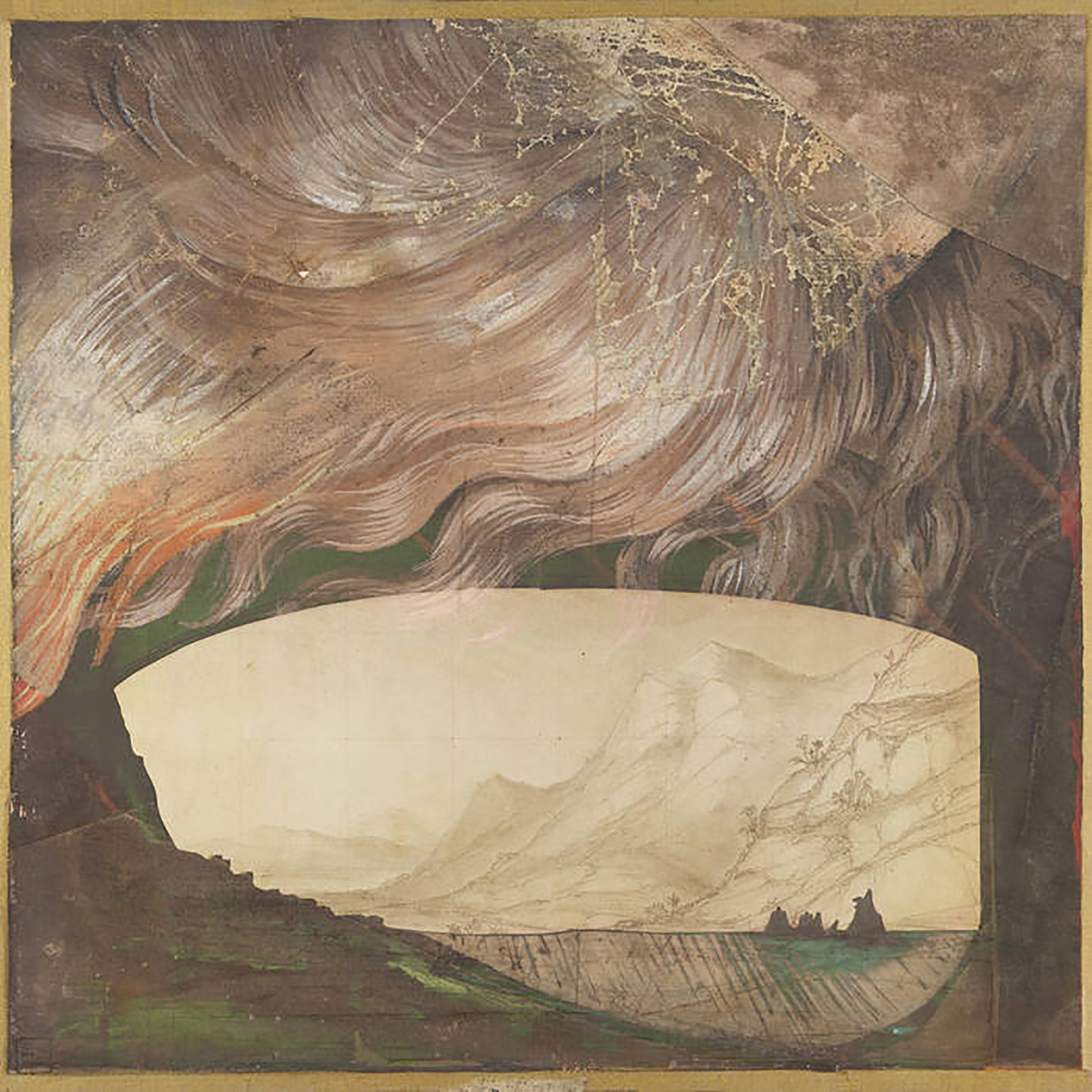
Released back in the spring, this debut full-length from cryptically named Belgian composer 't Geruis has gradually blossomed into my favorite Lost Tribe Sound release not made by William Ryan Fritch or Andy Cartwright. According to the composer, Various Thoughts and Places is "an exercise in finding the balance between beauty and what is broken," which is a concise and poetic way of saying that this album shares a healthy amount of common ground with the more sublime side of tape loop artists such as Craig Tattersall and Andrew Hargreaves. Admittedly, few stylistic niches scream "Anthony D'Amico will like this” more than that one, but this album is also unexpectedly psychotropic and otherworldly in a way that is quite unique to 't Geruis. My best stab at describing that vision is that Various Thoughts and Places sounds like it was crafted from a handful of fragments of gorgeous and impressionistic-leaning classical albums and enhanced with strangled animal-like howls (I think there may also be a cannibalized pop song that I cannot place lurking in there too). Moreover, the execution is absolutely transcendent. Anyone looking for a slow-burning and immersive phantasmagoria of hissing loops and tenderly bittersweet melodies can basically begin and end their search here, as it is damn near impossible to imagine anyone surpassing this modest masterpiece once it hits its stride.
The opening "Tree Weeping (Lacrima)" nicely sets the gently hallucinatory mood with a one-finger piano melody wandering through a landscape of subtle string drones, crackle, and hiss before blossoming into a lovely and bittersweet violin melody. In a rough sense, both the opener and the album as a whole could be described as "classical-adjacent," as the primary building blocks are simple piano and string melodies, but the album starts to feel considerably more unique and inspired with the third piece ("Een Deur Ergens In De Vallei"), as the full depth of 't Geruis's vision starts to quietly reveal itself. It evokes a flickering, slow motion silent film accompanied by a crackling supernatural Victrola that imbues every sound with a dreamlike melancholia that feels gnawed, vulnerable, and lovesick. From that point onward, the album settles into a sustained run of absolutely beautiful pieces that makes it clear that 't Geruis is probably some kind of textural genius/master loop architect. On "Where Birds Resonate," for example, a simple plinking melody gradually starts tumbling into itself while a cricket-like textural backdrop hypnotically pulses and pans in see-sawing fashion, while "Le Cadeau d'Alice" calls to mind the gossamer folktronica of early Colleen enhanced with a corroded-sounding bass loop that feels half "industrial" and half "slowly heaving cosmic exhalation."
Elsewhere, "Rendit l'Âme" uses a simple, pretty piano loop as the backdrop from a gnarled, warbling melody that sounds like it is struggling to emerge from the spirit realm. There is a definite "séance" vibe to the piece, but it also feels more visceral than that, as if 't Geruis built a homemade microphone that could pick up the sadness of eternity and that it manifested itself as a loop of tape-ravaged, heartbroken moans. Despite that, the piece and the album are not particularly dark one on their surface, as the central focus is almost always on light, lovely melodies rather than brooding atmospheres—the melodies just happen to be corroded, crackling, and hiss-chewed to such a degree that they always feel haunted and otherworldly. I suppose I would be remiss if I did not also mention that "Wanneer Alles Even Stil Staat" and "De Waarnemer" are highlights as well, but the album feels like a series of elegant variations on the same themes and its true magic lies in the sustained and beautiful spell that it casts as a whole. At its best, Various Thoughts and Places scratches roughly the same itch as some other contemporary tape music melancholia luminaries (always welcome territory), yet it also feels like it is being somehow channeled from an earlier century, which is quite a neat trick (and a tough illusion to sustain). While it admittedly took me a few listens before the full beauty of 't Geruis's vision began to fully bleed into my consciousness, I certainly got there eventually and this has since become one of my favorite releases of the year.
Samples can be found here.
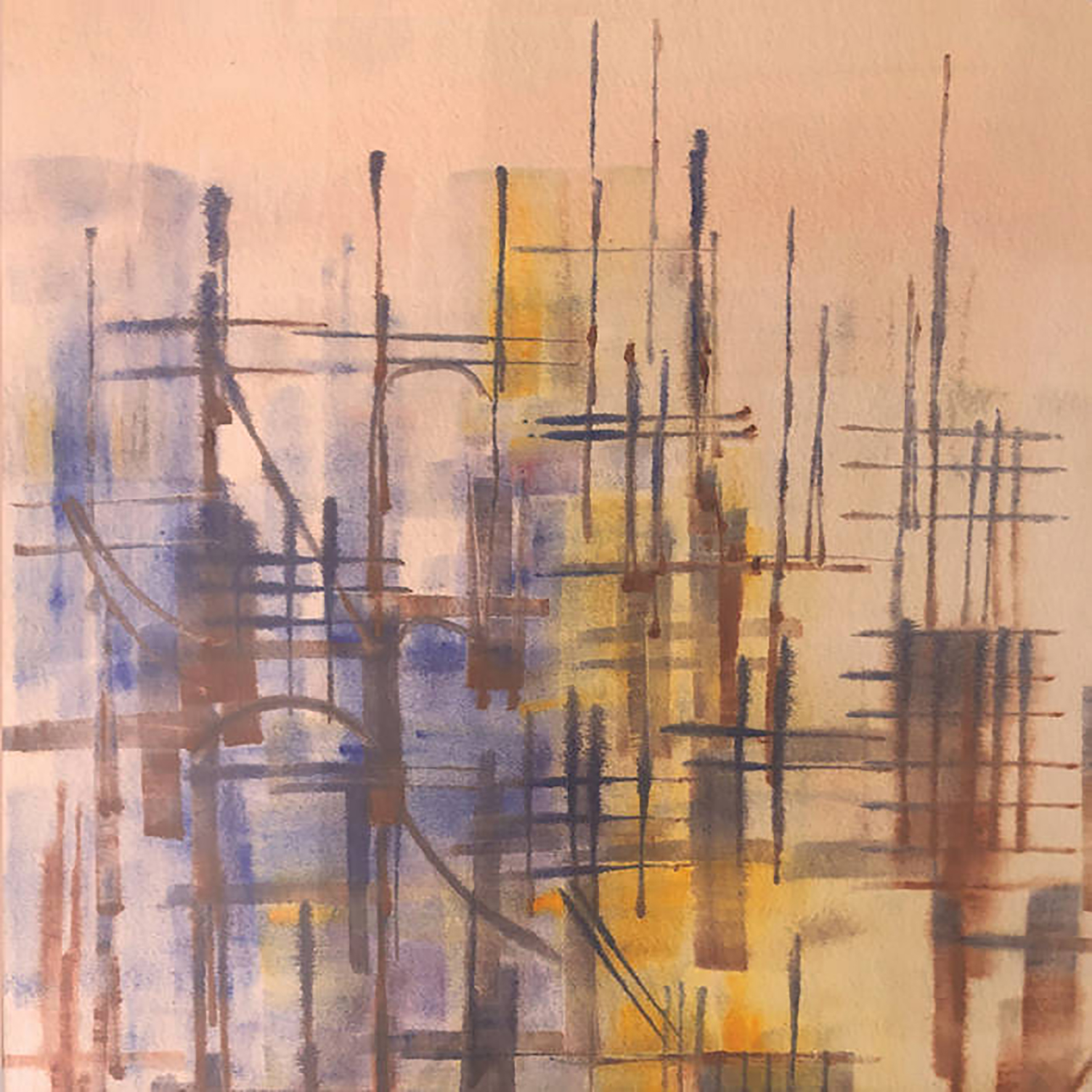 As far as I am concerned, Konstantinos Soublis earned a lifetime pass as dub techno royalty with his early Chain Reaction work (the likes of which enjoyed a well-deserved renaissance when Type reissued Vibrant Forms in 2013). Much like fellow visionary Moritz von Oswald, however, Soublis has a creatively restless spirit that has led him in a number of different directions since that scene's late '90s/early '00s golden age came to an end. While I cannot say that I have been a fan of all of Fluxion's various detours over the years, Soublis's unpredictably hit-or-miss discography has continued to surprise me with a legitimate hit every few years. In fact, Fluxion has been in unusually fine form recently and that upswing seems to have culminated in this album, which is unexpectedly one of the most uniformly strong and inspired releases in the project's entire oeuvre. Part of that success is likely due to Soublis's decision to take his vision in a more intimate and inwardly inspired direction (the album was inspired by "real life moments, people, expectations, joy, dreams and disappointments"), but the primary appeal of Parallel Moves is that his new inspirations manifested themselves in quite a killer batch of unusually sensual, soulful, and melodic songs. To my ears, this is a very strong contender for the best Fluxion album ever released.
As far as I am concerned, Konstantinos Soublis earned a lifetime pass as dub techno royalty with his early Chain Reaction work (the likes of which enjoyed a well-deserved renaissance when Type reissued Vibrant Forms in 2013). Much like fellow visionary Moritz von Oswald, however, Soublis has a creatively restless spirit that has led him in a number of different directions since that scene's late '90s/early '00s golden age came to an end. While I cannot say that I have been a fan of all of Fluxion's various detours over the years, Soublis's unpredictably hit-or-miss discography has continued to surprise me with a legitimate hit every few years. In fact, Fluxion has been in unusually fine form recently and that upswing seems to have culminated in this album, which is unexpectedly one of the most uniformly strong and inspired releases in the project's entire oeuvre. Part of that success is likely due to Soublis's decision to take his vision in a more intimate and inwardly inspired direction (the album was inspired by "real life moments, people, expectations, joy, dreams and disappointments"), but the primary appeal of Parallel Moves is that his new inspirations manifested themselves in quite a killer batch of unusually sensual, soulful, and melodic songs. To my ears, this is a very strong contender for the best Fluxion album ever released.
At its core, Parallel Moves still very much feels like a Fluxion album, as the usual dub techno elements are all in place (propulsive grooves, dub-wise production shadings, a fondness for minimalism, and a warm, repeating pulse), but it also feels elevated in a way that is difficult to pin down. I have seen it described as jazz-tinged and "almost balearic," however, and that seems reasonably accurate: it certainly feels breezy and tropical at times, yet is also feels like a lot of other things as well. The deeper transformation seems to lie in the execution rather than the style, as the best songs feel organic, nuanced, and casually effortless in the best way possible. For example, the album’s zenith is "Orange Sky," which is essentially just a stomping, off-kilter beat, a simple two-chord pulse, and some warm, bleary drones, yet the magic lies in the details and the dynamics (finger snaps, flickers of spectral guitar, etc.). Moreover, Soublis somehow makes it all feel effortless. It feels a bit like the heavily reggae-influenced dub techno of Rhythm & Sound, yet this is one of the rare instances where someone can match that celebrated project in quality, as Soublis steers that aesthetic into more sun-dappled territory with impressive lightness of touch and no loss of depth.
The title piece is even closer to the classic R&S sound at first, but the austere reggae groove proves to be merely the foundation for a smokily beautiful and soulful electric piano melody. And it only gets better from there, as an echoey dub breakdown steadily builds into a thumping and vaguely noirish finale. Elsewhere, "Correlation" beautifully transforms a warmly bittersweet synth reverie into a surprisingly sensual and thumping house banger, while "In Limbo" takes that four-on-the-floor kick drum into neon-lit noir-jazz territory (if Nicolas Winding Refn made a hyper-stylized Raymond Chandler adaptation with lots of slow-motion night driving scenes, this would absolutely be the appropriate soundtrack). "Blue and Yellow" is another highlight, as what feels like an improvised vamp steadily evolves into a nuanced, shapeshifting juggernaut that seems like it would have only continued to get better and better if it had been allowed to extend for the entire album. Naturally, there are plenty of other excellent grooves and delightful stylistic twists among the remaining pieces, as Soublis rarely (if ever) misses the mark here. More than that, however, he regularly blows up the goddamn mark with a seemingly supernatural gift for subtly incorporating new elements at precisely the right time to make a song catch fire. I have had this album in heavy rotation for months and I have yet to start growing tired of it, as there is a seemingly endless host of details and shadings to newly appreciate with each listen. Parallel Moves is instantly canonical dub techno.
Samples can be found here.
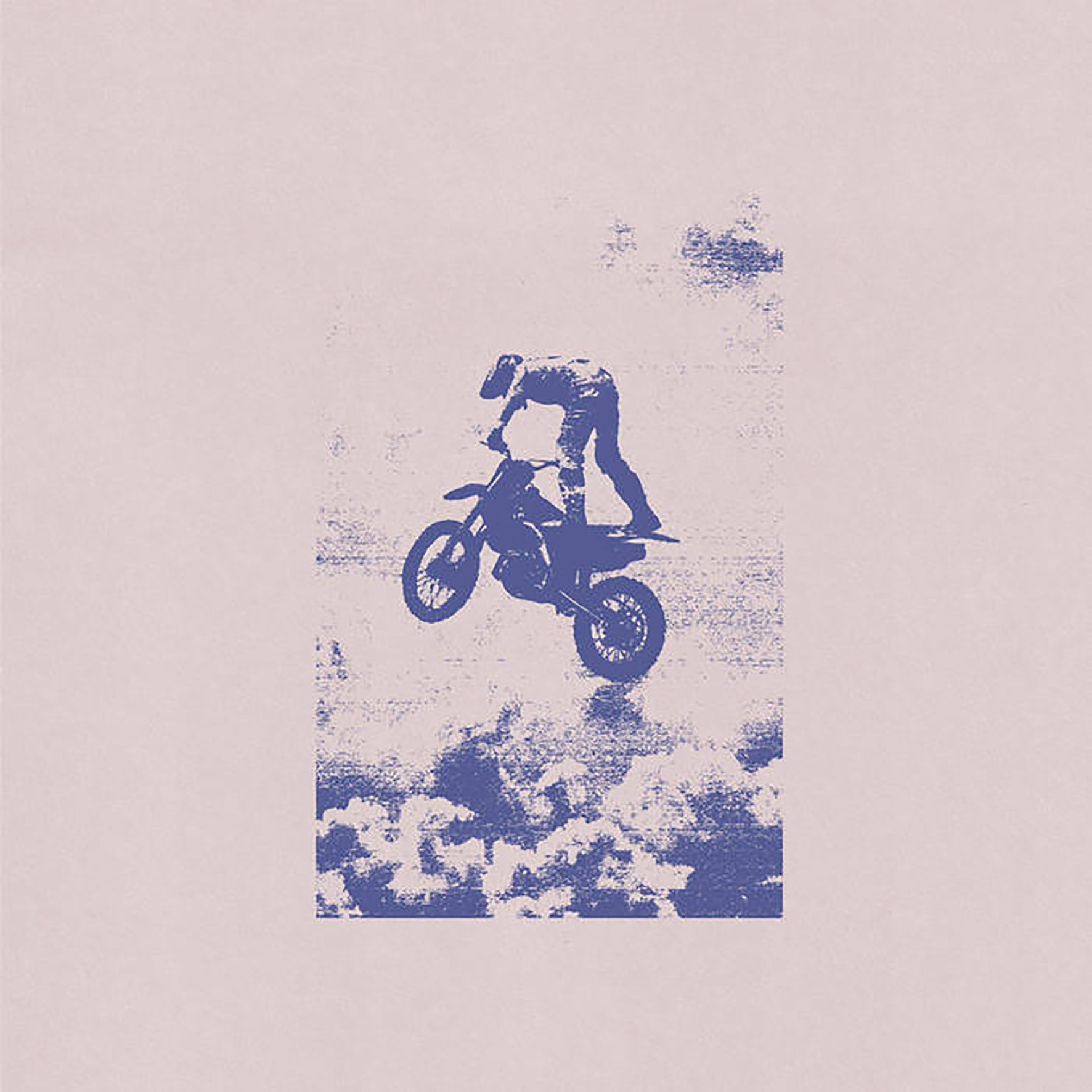 This is the debut album from a "network of New England string pluckers, organ drivers and bell ringers" centered around composer/pedal steel guitarist Henry Birdsey. This is my first real encounter with Birdsey's work, though I was vaguely aware of his duo Tongue Depressor with Crazy Doberman's Zach Rowdan. While I do not get the usual otherworldly "Just Intonation" vibe from Country Tropics' buzzing and layered harmonies, unconventional tunings have historically been a central theme in Birdsey's work, so that may be an element here too. Then again, Old Saw seems like a very different project than Birdsey's usual fare in one very significant way, as Country Tropics is billed as a unique strain of devotional music. I believe it is a secular one, however, as the album description claims "Old Saw points our gaze downward towards the terrafirma unconsidered, and guides our hands into the dirt" rather than towards a "fantastical, celestial vision of understanding." Regardless of their inspirations, Old Saw is an ensemble like no other, approximating a rustic drone or free folk ensemble like Pelt or Vibracathedral Orchestra in an especially warm and transcendent mood (albeit not so warm and transcendent as to preclude some welcome sharp edges, shadows of dissonance, and heavy buzzing strings). This is quite an excellent and unique album.
This is the debut album from a "network of New England string pluckers, organ drivers and bell ringers" centered around composer/pedal steel guitarist Henry Birdsey. This is my first real encounter with Birdsey's work, though I was vaguely aware of his duo Tongue Depressor with Crazy Doberman's Zach Rowdan. While I do not get the usual otherworldly "Just Intonation" vibe from Country Tropics' buzzing and layered harmonies, unconventional tunings have historically been a central theme in Birdsey's work, so that may be an element here too. Then again, Old Saw seems like a very different project than Birdsey's usual fare in one very significant way, as Country Tropics is billed as a unique strain of devotional music. I believe it is a secular one, however, as the album description claims "Old Saw points our gaze downward towards the terrafirma unconsidered, and guides our hands into the dirt" rather than towards a "fantastical, celestial vision of understanding." Regardless of their inspirations, Old Saw is an ensemble like no other, approximating a rustic drone or free folk ensemble like Pelt or Vibracathedral Orchestra in an especially warm and transcendent mood (albeit not so warm and transcendent as to preclude some welcome sharp edges, shadows of dissonance, and heavy buzzing strings). This is quite an excellent and unique album.
Aside from the strangely beautiful and poetic cover art of a dirt bike soaring over the clouds, Country Tropics is the sort of album that could easily be mistaken for an old private press release from a rural religious commune. I would definitely find it challenging to guess where that commune was located, however, as the vibe feels like a quaint, historic small New England town was dropped onto a sundappled Pacific coast. Regardless of where that hypothetical commune is based, Old Saw seem to be channeling something beautiful and magical in a way that is quite singular, as these four drone reveries feel simultaneously dreamlike, homespun, and earthy. Knowing that Birdsey is a serious avant-garde composer helps explain how the album ultimately turned out so texturally compelling and languorously hallucinatory, but it also feels like he consciously set out to make something pure, semi-traditional, and organically collaborative. This is kind of a "best of both worlds" situation, as the compositions themselves are simple, beautiful, and devoid of self-conscious artiness, yet they definitely sound like they were ultimately produced by someone who knows how to craft richly textured and harmonically interesting sound art.
Each of the four pieces is quite lovely in its own way, but the first two feel like the most gorgeous incarnations of Old Saw's devotional dreamscapes of bygone Americana. I honestly do not know how the ensemble conjured the buzzing backing drones for the opening "Dead Creek Drawl," as none of the instruments I think I hear (shruti box, tampura) are listed in the credits, but it all certainly sounds great nonetheless. As the piece unfolds, however, the gently churning and buzzing acoustic drones are subtly enhanced with rippling banjo arpeggios, woozily sliding pedal steel, moaning strings, and fleeting glimpses of a very cool guitar motif. The piece has a very unhurried and meditative feel that suits it well, as I do not feel like Old Saw are headed toward a destination so much as fading in and out of focus from a place of sublime bliss that I am quite content to linger in. "The Mechanical Bull at Our Lady of the Valley" initially has a more propulsive feel due to Harper Reed's rapidly rippling nylon string arpeggios, but otherwise sticks to roughly the same territory as its predecessor until some inspired new elements creep into the reverie, as it feels like someone starts prying the top off a Pandora's Box of subtle and warm psych textures (flickers of backwards melodies, twinkling and clanging bells, etc.). The remaining two pieces are cut from roughly the same cloth, which is just fine by me, as the real magic of Country Tropics is that Old Saw manage to cast and sustain a mesmerizing and immersive spell of soulful, subtly hallucinatory tranquility for nearly forty minutes. This is a quiet and modest masterpiece—the kind of album that I wish I could live inside.
Samples can be found here.
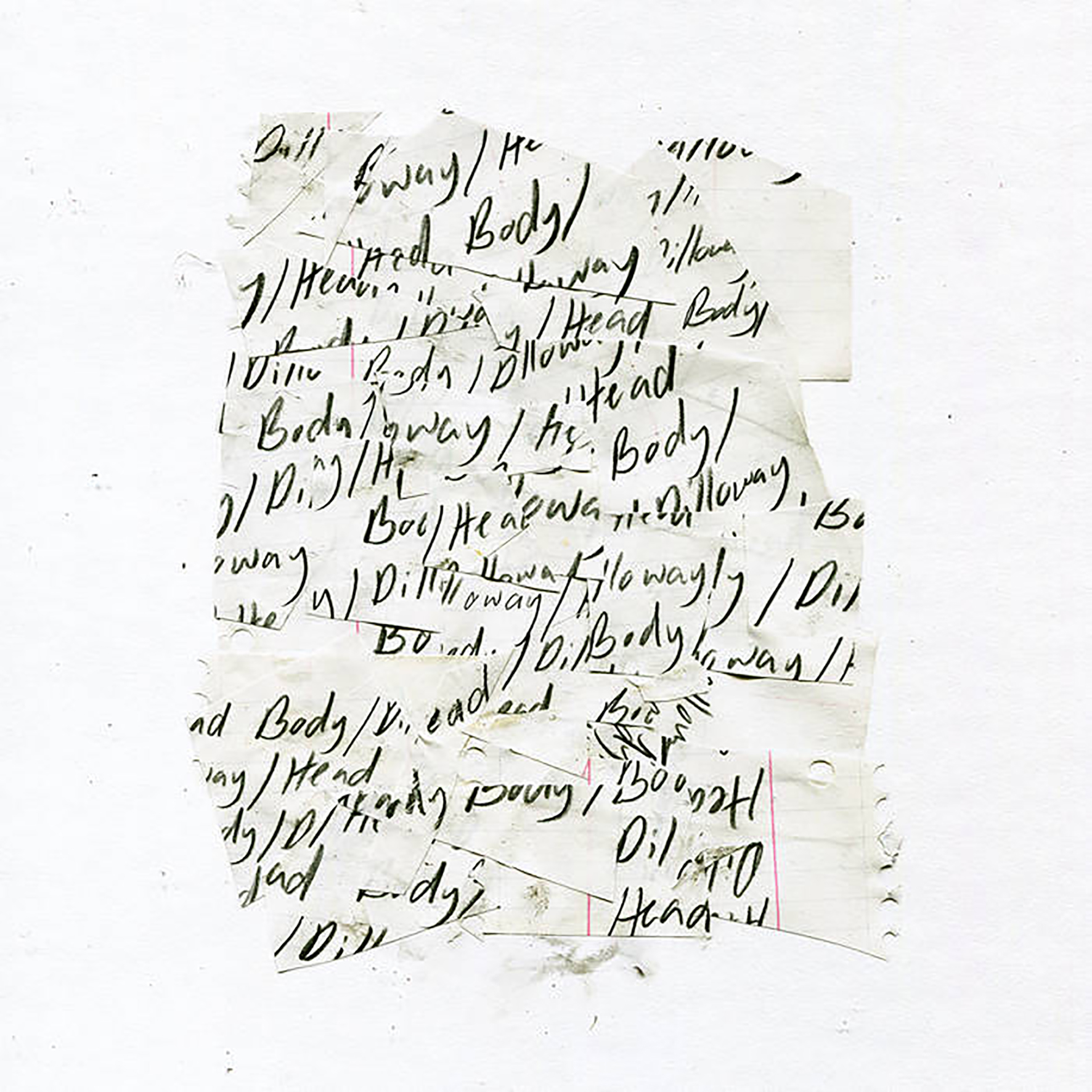 Past experience has taught me not to get too excited about promising-sounding collaborations between great artists, but the allure of this particular project was admittedly damn hard to resist: Body/Head is consistently the most provocative and intense of Sonic Youth's descendants and Aaron Dilloway seems absolutely incapable of releasing a disappointing album these days. Still, there is never any way to predict which threads will assert their dominance when distinctive visions collide, so there are a number of possible shapes that this album could have taken. To my ears, it is Dilloway's broken, murky, and obsessively looping aesthetic that mostly steers the ship, but the balance between the three artists is sufficiently unpredictable and shifting to make this trio feel like something quite different from either Dilloway's solo work or past Body/Head releases. Matt Krefting already did a fine job of summarizing the trio's shared vision with "over and over one gets the sense that the music is trying to wake itself from a dream," but it is also more than that, as this trio have a real knack for slowly transforming gnarled and challenging introductory themes into unexpected passages of sublime beauty.
Past experience has taught me not to get too excited about promising-sounding collaborations between great artists, but the allure of this particular project was admittedly damn hard to resist: Body/Head is consistently the most provocative and intense of Sonic Youth's descendants and Aaron Dilloway seems absolutely incapable of releasing a disappointing album these days. Still, there is never any way to predict which threads will assert their dominance when distinctive visions collide, so there are a number of possible shapes that this album could have taken. To my ears, it is Dilloway's broken, murky, and obsessively looping aesthetic that mostly steers the ship, but the balance between the three artists is sufficiently unpredictable and shifting to make this trio feel like something quite different from either Dilloway's solo work or past Body/Head releases. Matt Krefting already did a fine job of summarizing the trio's shared vision with "over and over one gets the sense that the music is trying to wake itself from a dream," but it is also more than that, as this trio have a real knack for slowly transforming gnarled and challenging introductory themes into unexpected passages of sublime beauty.
The album is comprised of two longform pieces separated by a shorter piece ("Goin' Down") and each one feels like a different direction or even an entirely different band. In fact, the album art does a remarkably great job at conveying what the music is like: a handful of recognizable elements chopped up and re-assembled into a nearly unrecognizable abstraction. The opening "Body/Erase" is the most "Dilloway" of the three songs, as it features a long, slow fade in of subtly oscillating drone and warped tape warbles that feel like an unsettling dream where conversations are slowed and smeared into something inscrutable and vaguely sinister. Gradually, the gnarled tape loop fragment become more frequent and violent, blossoming into a jabbering, splattering phantasmagoria that starts to become even more unhinged shortly after the nine-minute mark with the appearance of an ugly repeating buzz and an insistent pedal tone from Nace's guitar. Once all the elements are in place, "Body/Erase" becomes a massive, seething juggernaut of layered cacophony.
In the wake of that slow-burning tour de force, some more recognizable and expected elements surface with "Goin' Down," which initially sounds like a classic Sonic Youth single that has been stretched and deconstructed into abstraction. I dig the repeating howl of warbling guitar noise, but the real payoff is the squelching, wobbly, and ruined reverie of the final minute. The album then ends with its wildest, most go-for-broke piece, as the shapeshifting 13-minute epic "Secret Cuts" alternately sounds like the slow boinging of a massive cosmic spring, a noise guitar show frozen in looping suspended animation, and the hushed voice of an angel speaking from inside my head ("do you want?" is the only phrase that I can reliably make out). Some of the transitions between segments can be a little jarring (purposely, I presume), but all of the segments themselves are compelling and lead to a lovely set piece of warm, swelling drones and flickering voice fragments. It is damn lovely while it lasts, but an earlier noise guitar motif unexpectedly claws its way back from the grave to end the piece on an ugly, gnarled note. I cannot say that I am particularly surprised that Nace and Gordon were so game to let Dilloway drag their vision through a meat grinder or that the end result was so good, yet I was legitimately caught off guard by the ephemeral oases of beauty that occasionally surface. While this can admittedly be a prickly, difficult, and potentially room-clearing album at times, it is also a singular and unusually memorable release for all involved (no mean feat, given the massive, highlight-filled discography of the trio).
Samples can be found here.
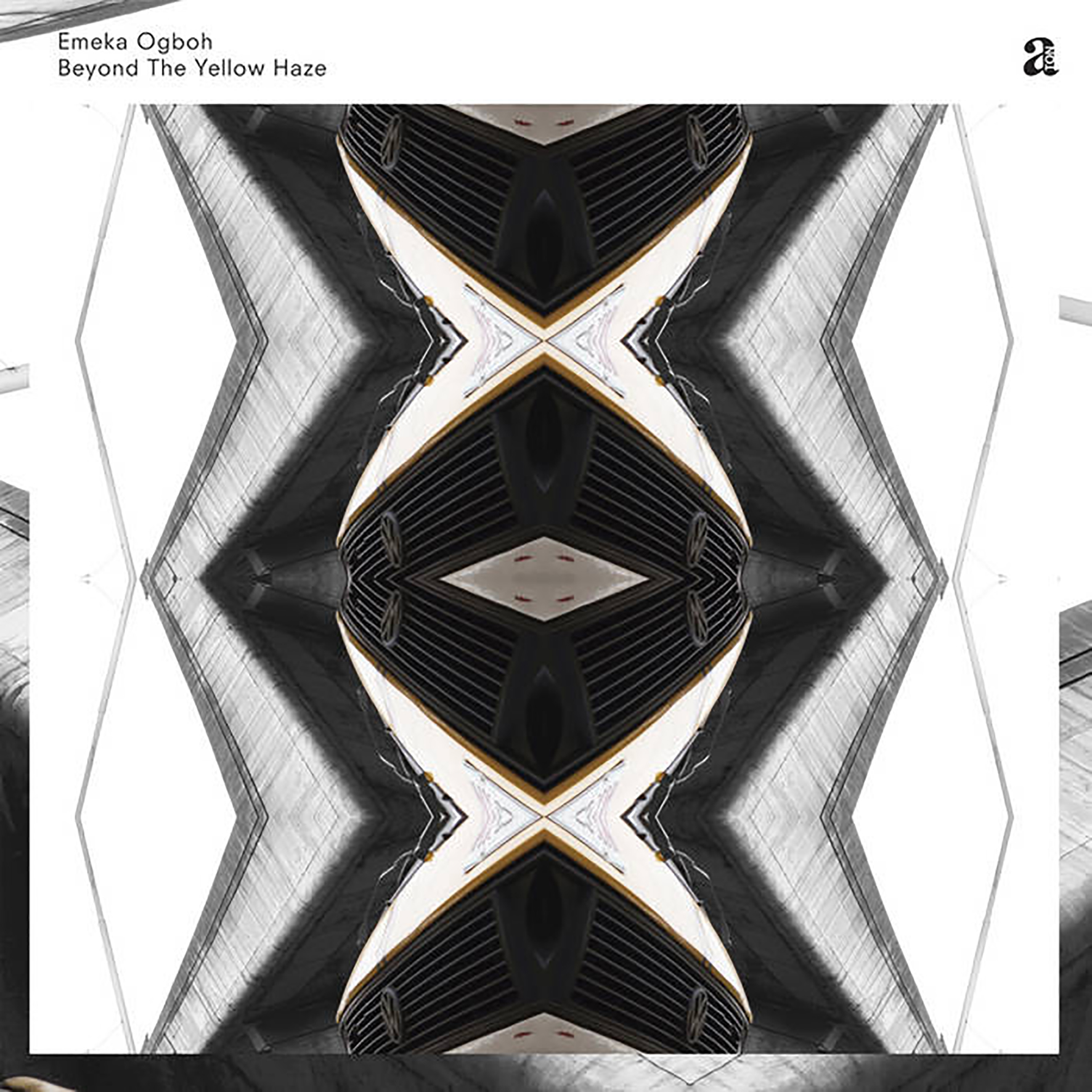 This bombshell release is the first album from Nigerian sound and installation artist Emeka Ogboh, but it sounds like the assured work of killer dub techno producer at the height of their powers. On its surface, Beyond The Yellow Haze admittedly (and probably unintentionally) shares a lot of common ground with prime Muslimgauze, as a central theme of Ogboh's art is his passion for capturing the ambient city sounds of Lagos. Consequently, these five pieces are nicely enhanced with layers of street noise, conversations, and passing snatches of melody, yet Beyond The Yellow Haze is primarily a great album because Ogboh is a goddamn wizard at crafting heavy, shape-shifting grooves with elegant dubwise percussion flourishes. I suppose the beats also creep into Muslimgauze territory at times, as Ogboh is similarly quite fond of slow and hypnotic grooves flavored with African and Arabic rhythms, yet the two artists differ dramatically when it comes to focus and exacting execution (among other things), as nearly every song here is a flawless diamond of immersively layered textures, slow-burning dynamic transformation, and crunching physicality. This is probably the strongest beat-driven album that I have heard all year, debut or otherwise.
This bombshell release is the first album from Nigerian sound and installation artist Emeka Ogboh, but it sounds like the assured work of killer dub techno producer at the height of their powers. On its surface, Beyond The Yellow Haze admittedly (and probably unintentionally) shares a lot of common ground with prime Muslimgauze, as a central theme of Ogboh's art is his passion for capturing the ambient city sounds of Lagos. Consequently, these five pieces are nicely enhanced with layers of street noise, conversations, and passing snatches of melody, yet Beyond The Yellow Haze is primarily a great album because Ogboh is a goddamn wizard at crafting heavy, shape-shifting grooves with elegant dubwise percussion flourishes. I suppose the beats also creep into Muslimgauze territory at times, as Ogboh is similarly quite fond of slow and hypnotic grooves flavored with African and Arabic rhythms, yet the two artists differ dramatically when it comes to focus and exacting execution (among other things), as nearly every song here is a flawless diamond of immersively layered textures, slow-burning dynamic transformation, and crunching physicality. This is probably the strongest beat-driven album that I have heard all year, debut or otherwise.
This is technically a reissue, as the album first surfaced as a limited vinyl release of 150 hand-numbered copies as part of Ogboh's 2018 exhibition at Galerie Imane Farès in Paris. I suspect very few people outside the visual art world noticed or heard that initial release, however, so it is a minor miracle that Berlin's influential Ostgut Ton picked up the baton to give Beyond The Yellow Haze a well-deserved second chance to make an impact three years later. It certainly made an impact on me within its first minute, as "Lekki Aiah Freeway" is a feast of deep dubby grooves, stuttering woodblock flourishes, and dreamlike rave pads. The ghostly synth bits quite beautiful and unexpected, but they are also basically just icing on an already perfect cake: I could listen to Ogboh build and dismantle a beat all goddamn day.
Unsurprisingly, an opening salvo that resembles a giant woodpecker stomping his way Godzilla-style through crowded Lagos streets on his way to the club is quite hard to top, yet Ogboh nevertheless manages to surpass that killer opener at least once with "Everydaywehustlin" (and arguably a second time with the more ambient-inspired "Palm Groove").  In a rough sense, "Everydaywehustlin" is quite similar to "Lekki Aiah Freeway," but with the beautiful synth pads mostly swapped out for layers of street noise and voices. As far as I am concerned, however, the salient point is that "Everydaywehustlin" is a monster groove for the ages, as it sounds like a great Muslimgauze album and a chopped & screwed Notorious B.I.G. tape crash landed in the middle of a busy Lagos street (and the woodpecker is back too). It is, quite simply, an endlessly shifting juggernaut of industrial-damaged heavy dub brilliance. The album's other beat-driven piece ("Danfo Mellow") does not quite hit as hard for me, as a gently burbling synth motif is entrusted with a bit too much heavy lifting, but it may be a good entry point for those looking for a bit melody in the balance. The album's final major piece, "Palm Grove," unexpectedly abandons drums entirely in favor of bleary, rainswept ambiance that evokes a sensual, hallucinatory, and neon-soaked tour of late-night Lagos streets experienced through the window of a slow-moving cab. Remarkably, even the extremely brief "Outro" that concludes album is kind of great, as Ogboh manages to turn 90 seconds of finger bells and distant street noise into an immersive and gently psychotropic reverie. To my ears, this album is at worst two or three instant classics in the span of just five songs, but it comes extremely damn close to being a wall-to-wall tour de force.
Samples can be found here.
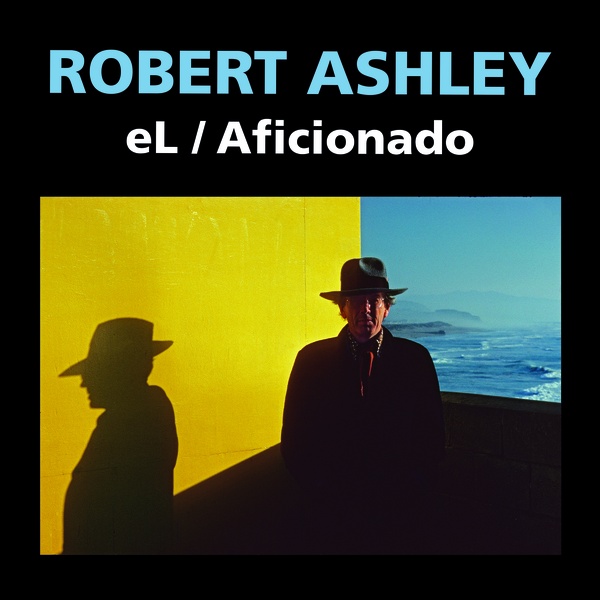 Robert Ashley’s enigmatic opera of interrogation was frequently performed between 1987 and 1993, and a previous recording was released on Lovely Music in 1994. The cast of a 2021 production in Roulette, Brooklyn, are featured on this new rendition, with Kayleigh Butcher, as The Agent, and Brian McCorkle, Bonnie Lander, Paul Pinto as Interrogators #1, 2, and 3. Above and beyond Ashley’s melodies, each participant singer is assigned their own distinct pitch around which they improvise vocal inflections to portray intent and meaning. eL/Aficionado displays the compelling depth of Ashley’s dazzlingly creativity, which is somewhere on a line leading from Edward Hopper and Samuel Beckett to Laurie Anderson and Len Jenkin.
Robert Ashley’s enigmatic opera of interrogation was frequently performed between 1987 and 1993, and a previous recording was released on Lovely Music in 1994. The cast of a 2021 production in Roulette, Brooklyn, are featured on this new rendition, with Kayleigh Butcher, as The Agent, and Brian McCorkle, Bonnie Lander, Paul Pinto as Interrogators #1, 2, and 3. Above and beyond Ashley’s melodies, each participant singer is assigned their own distinct pitch around which they improvise vocal inflections to portray intent and meaning. eL/Aficionado displays the compelling depth of Ashley’s dazzlingly creativity, which is somewhere on a line leading from Edward Hopper and Samuel Beckett to Laurie Anderson and Len Jenkin.
This piece has a clarity of enunciation and easy pace (Ashley favored 79 beats per minute) which gives it a hypnotic and relaxed feel. Yet it is also a work of complexity and intensity which sustains interest over repeated listens. I recommend a least four or five o really get into it. I love the way the language of personal ads and descriptions of real estate heighten the atmosphere of double meaning. These could be coded assignments, perhaps target subjects for The Agent detailing their locations and plans of their residences to aid home invasion, snooping, or worse. The singing and narration are mostly not easily identified as operatic in the classic sense, but they establish the necessary mood. The use of synths adds to the sense of a Kafkaesque trial in a dream landscape. I am reminded of an excellent presentation by Matmos of Ashley’s Private Lives at a festival in Knoxville in 2017, where I nodded off briefly at one point but awoke quite confident that, given the use of repetition and the skillfully disguised material, I had not missed a vital clue. The hypnotic mood of eL/Aficionado is similar; as meaning goes in and out of focus, reassuring voices become sinister, and whispers mislead or give helpful prompts. Yet repeat listens offer up some real jewels, for example the meaning (in The Agent’s department) of the word “brother” and the reference to a “time displacement exercise” and information which must be taken "to the grave." Part gumshoe exit interview, part meditation on the way artists interpret (and alter) their surroundings, part comment on the universality of double lives, part snapshot of the shifting reliability of memory, part critique of society as spectacle; eL/Aficionado is as mysterious and life-enhancing as spending purgatory unable to leave the grounds of the Getty museum because you lost your companion and forgot where you parked.
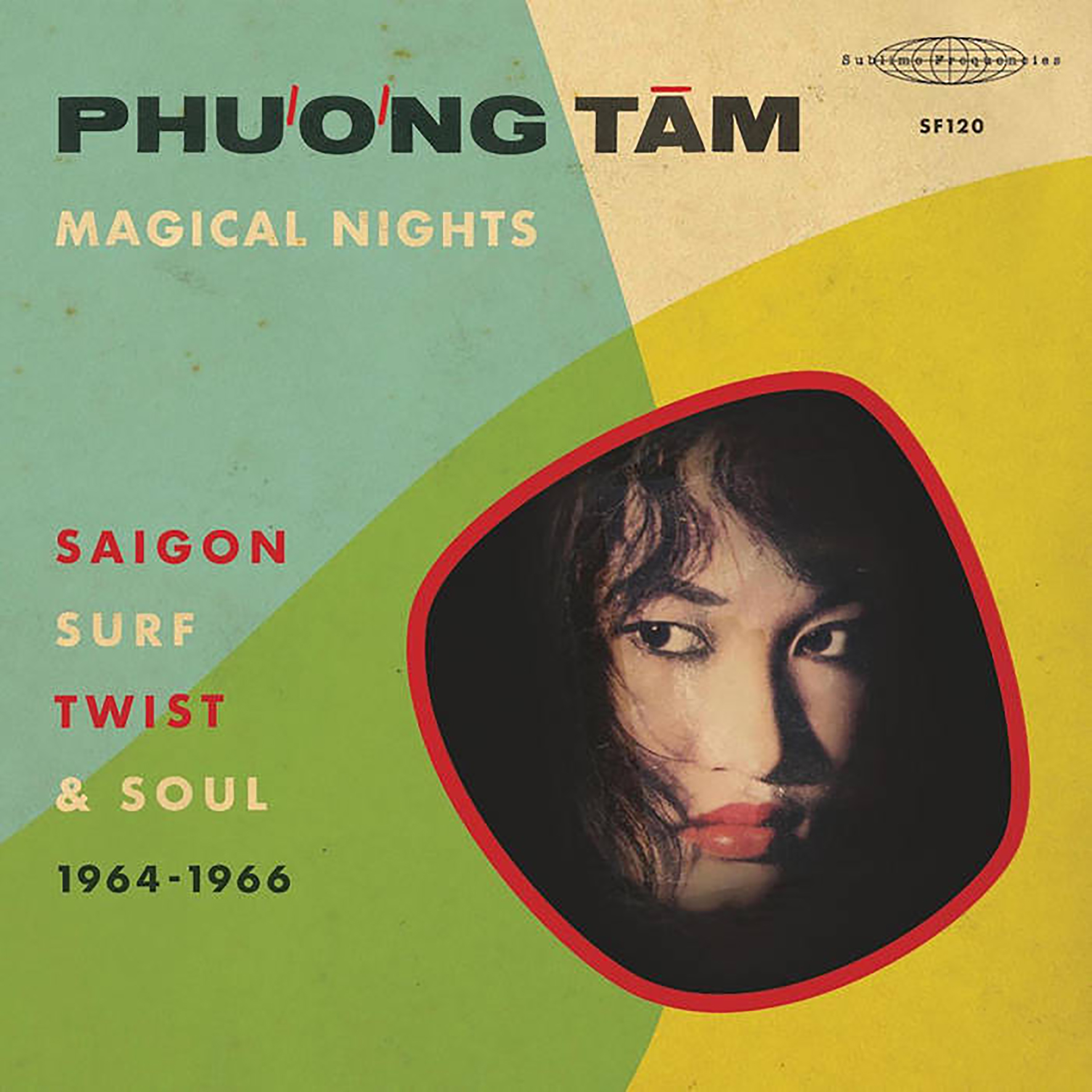 This collection, which I hereby deem an instant Sublime Frequencies classic, is devoted entirely to the long-unheard and elusive discography of one of the most magnetic singers of Saigon's "golden music" age. Part of the reason why Ph∆∞∆°ng T√¢m's work has languished in undeserved semi-obscurity is grimly predictable, as most of her music was destroyed during Vietnam's great purge of American-influenced culture in 1975, but T√¢m also abruptly ended her singing career in her prime to pursue forbidden love instead (an acceptably cool reason, I feel). According to her daughter Hannah H√†, Phương Tâm remained something of a highly localized karaoke supernova in the years since her stardom days, but H√† did not discover how truly famous her mom actually was until late 2019. One thing led to another and H√† found Mark Gergis after discovering his beloved Saigon Rock and Soul compilation. Gergis and a handful of like-minded crate-digging luminaries then set about tracking down as much of Ph∆∞∆°ng T√¢m's rare and often mistakenly attributed oeuvre as they could find, much of which even T√¢m herself had not heard since the recording sessions. While the journey to this album is undeniably a fascinating and heart-warming one, the best part is the songs themselves, as this album is a treasure trove of fun, soulful, and sexy genre-blurring gems from the golden age of swinging Saigon nightlife. Moreover, I was legitimately gobsmacked to learn that these songs were all recorded by the same person in such a brief span, as T√¢m channels everything from Brenda Lee to Ella Fitzgerald to the kind of impossibly cool, sexy, and ahead-of-their-time numbers that feel like would-be highlights from Lux Interior and Poison Ivy‚Äôs oft-anthologized record collection.
This collection, which I hereby deem an instant Sublime Frequencies classic, is devoted entirely to the long-unheard and elusive discography of one of the most magnetic singers of Saigon's "golden music" age. Part of the reason why Ph∆∞∆°ng T√¢m's work has languished in undeserved semi-obscurity is grimly predictable, as most of her music was destroyed during Vietnam's great purge of American-influenced culture in 1975, but T√¢m also abruptly ended her singing career in her prime to pursue forbidden love instead (an acceptably cool reason, I feel). According to her daughter Hannah H√†, Phương Tâm remained something of a highly localized karaoke supernova in the years since her stardom days, but H√† did not discover how truly famous her mom actually was until late 2019. One thing led to another and H√† found Mark Gergis after discovering his beloved Saigon Rock and Soul compilation. Gergis and a handful of like-minded crate-digging luminaries then set about tracking down as much of Ph∆∞∆°ng T√¢m's rare and often mistakenly attributed oeuvre as they could find, much of which even T√¢m herself had not heard since the recording sessions. While the journey to this album is undeniably a fascinating and heart-warming one, the best part is the songs themselves, as this album is a treasure trove of fun, soulful, and sexy genre-blurring gems from the golden age of swinging Saigon nightlife. Moreover, I was legitimately gobsmacked to learn that these songs were all recorded by the same person in such a brief span, as T√¢m channels everything from Brenda Lee to Ella Fitzgerald to the kind of impossibly cool, sexy, and ahead-of-their-time numbers that feel like would-be highlights from Lux Interior and Poison Ivy‚Äôs oft-anthologized record collection.
Fittingly, the story of Phương Tâm's rise to stardom is nearly as strange and improbable as the story of this compilation, as her passion for music was first ignited by the ambient sounds of the courtyard where she played with friends as a child ("from one particular house, all sorts of American music seeped into the courtyard"). Once Tâm was thusly "introduced to a new world beyond traditional Vietnamese music," she proved to be a natural at assimilating the rapidly evolving cultural forces of the era ("musical trends with wild, ephemeral dance crazes were being thought up weekly; the twist, hully gully, the mashed potato – none of them a problem for Phương Tâm."). I dearly hope the same can someday be said of me. Fatefully, Tâm entered a singing competition at age 16 and soon became a fixture at various legendary Saigon nightclubs (often performing at multiple venues in a single night). Unsurprisingly, she quickly caught the attention of all of Saigon's most influential record labels and composers, as she was a "commanding presence" as well as "one of the very first singers to perform and record rock and roll." Demand for Tâm was such that she recorded "almost 30 known tracks" between 1964 and 1966 that seemed to effortlessly channel every fun twist- or rockabilly-esque trend of the time. Most (or all) of those hits are here and they are invariably a delight, yet the real magic of Magical Nights is the handful of less "bubblegum" pieces that feel like a killer surf band, a Bollywood dance party, a James Dean-style teen exploitation film, and a sensuous cabaret chanteuse all blurred together in a perfect cocktail of soulful, kitschy, and hip-shaking fun. One such gem ("Có Nhớ Đêm Nào") kicks off the album in style, but that is only the first of many bombshells to come. My other personal favorites are currently the slinky-sounding "Ngày Phép Của Lính" and the rolling lurch of "Anh Đâu Em Đó," but there is also an extremely generous helping of second-tier highlights destined to keep growing on me, as Tâm was almost always backed by musicians who knew how to whip up a hot groove. This entire album is pure pop bliss.
Samples can be found here.
 This unique debut album is definitely one of the year's most pleasant surprises, as art/music journalist Kretowicz assembled a bevy of talented collaborators to craft a poignant and subtly hallucinatory tour de force of autofiction-based sound art. While some of the people involved (Mica Levi, Tirzah, etc.) certainly enhance the initial allure of I hate it here, it is a great challenge to focus on anything other than Kretowicz's sardonic, time-bending narrative as soon as she opens her mouth and things gets rolling. Thematically, the album is billed as a "psychedelic audio narrative" that "wanders through a layered and multi-dimensional notion of existence as suffering," which mostly feels apt, yet it fails to convey how truly charming and blackly funny wandering through that notion with Kretowicz can be. More importantly, this is the rare spoken word album that remains compelling beyond the first listen, as the combination of Kretowicz's deadpan, accented voice and the sound collage talents of felicita & Ben Babbitt make it an absorbing delight long after the meaning and impact of Kretowicz's words dissipate into more abstract and nuanced pleasures like texture and feeling. To my ears, this is one of the most inspired, immersive, and memorable albums of the year.
This unique debut album is definitely one of the year's most pleasant surprises, as art/music journalist Kretowicz assembled a bevy of talented collaborators to craft a poignant and subtly hallucinatory tour de force of autofiction-based sound art. While some of the people involved (Mica Levi, Tirzah, etc.) certainly enhance the initial allure of I hate it here, it is a great challenge to focus on anything other than Kretowicz's sardonic, time-bending narrative as soon as she opens her mouth and things gets rolling. Thematically, the album is billed as a "psychedelic audio narrative" that "wanders through a layered and multi-dimensional notion of existence as suffering," which mostly feels apt, yet it fails to convey how truly charming and blackly funny wandering through that notion with Kretowicz can be. More importantly, this is the rare spoken word album that remains compelling beyond the first listen, as the combination of Kretowicz's deadpan, accented voice and the sound collage talents of felicita & Ben Babbitt make it an absorbing delight long after the meaning and impact of Kretowicz's words dissipate into more abstract and nuanced pleasures like texture and feeling. To my ears, this is one of the most inspired, immersive, and memorable albums of the year.
The album has the feel of a radio play, as it is centered primarily upon Kretowicz's recounting of a few significant events from her life, but her monologue is fleshed out with other voices, subtle ambient colorings, field recordings, and several surreal intrusions from scene-appropriate songs (such as Polish disco, for example). There is also a bittersweetly lovely piano theme that recurs at key moments throughout the piece. At its core, however, the album is essentially a handful of interwoven narrative threads united by the theme of suffering: an infected tattoo, an uncomfortable van trip to Poland, a desperate visit to a shaman, and the final days and funeral of Kretowicz's grandmother. Given that dark theme, a deep current of sadness, disconnection, and restlessness certainly runs throughout the album, yet Kretowicz wraps her heartwrenching memories in such a colorful, digression-filled, and bleakly amusing storytelling aesthetic that it all feels intimate, transcendent, and beautiful rather than uncomfortably sad. For example, a brief and incomplete list of my favorite moments includes: the tale of the aforementioned tattoo, a discussion of how Polish truck drivers keep themselves entertained, a morbid rumination interrupted with strong opinions about pants, Kretowicz's thoughts during a psychotropic shamanic ritual, and a treasured memory of the fleeting happiness she once experienced at a PJ Harvey concert. While a couple of the album's smeared stabs at psychedelia do not quite hit the mark for me, Kretowicz herself is an unwaveringly interesting and entertaining monologist and the album is masterfully edited and paced from start to finish. Moreover, it all builds up to quite an emotional wallop of an ending, but so far that ending has not been too heavy to deter me from immediately starting the album over again as soon as it ends. My gut tells me that I hate it here is an instant classic.
Samples can be found here.
 This is one of those rare collaborations in which I had absolutely no idea what kind of album to expect, as the only obvious common ground this duo shares is a strong interest in sound design, though it is probably safe to say they are both drawn to unusual projects too given their past involvement with Rắn Cạp ĐuôI Collective. Now that I have heard Myxomy, however, I am faced with the fresh challenge of describing a vision that is elusively shapeshifting, kaleidoscopic, and wrong-footing from start to finish. I suppose the most consistent aesthetic is something akin to "half-deconstructed/half-maximalist outsider R&B" or some similarly heretofore nonexistent genre, but the real theme seems to exclusively be one of endless mutation. In fact, the idea for the collaboration originally began with James Ginzburg sending Ziúr some beats from his early techno days, which triggered a dueling exchange of raw material reworkings that rapidly escalated and morphed until the "duo's fragmented sketches and scribbles took on new life" that "developed into anxious, hybridized pop jewels." To be fair, Myxomy is admittedly poppier than I ever would have anticipated, but this project is waaaaay too weird, fractured, and unpredictable to ever be mistaken for actual pop (jewels or otherwise). It mostly feels more like a handful of hooks wandering through a collapsed post-industrial landscape in search of a proper home. I am not sure any of them ever quite found one (seems doubtful), but some of these experiments are impressively visceral and unique in their own right (even if they can sometimes be a real challenge to digest).
This is one of those rare collaborations in which I had absolutely no idea what kind of album to expect, as the only obvious common ground this duo shares is a strong interest in sound design, though it is probably safe to say they are both drawn to unusual projects too given their past involvement with Rắn Cạp ĐuôI Collective. Now that I have heard Myxomy, however, I am faced with the fresh challenge of describing a vision that is elusively shapeshifting, kaleidoscopic, and wrong-footing from start to finish. I suppose the most consistent aesthetic is something akin to "half-deconstructed/half-maximalist outsider R&B" or some similarly heretofore nonexistent genre, but the real theme seems to exclusively be one of endless mutation. In fact, the idea for the collaboration originally began with James Ginzburg sending Ziúr some beats from his early techno days, which triggered a dueling exchange of raw material reworkings that rapidly escalated and morphed until the "duo's fragmented sketches and scribbles took on new life" that "developed into anxious, hybridized pop jewels." To be fair, Myxomy is admittedly poppier than I ever would have anticipated, but this project is waaaaay too weird, fractured, and unpredictable to ever be mistaken for actual pop (jewels or otherwise). It mostly feels more like a handful of hooks wandering through a collapsed post-industrial landscape in search of a proper home. I am not sure any of them ever quite found one (seems doubtful), but some of these experiments are impressively visceral and unique in their own right (even if they can sometimes be a real challenge to digest).
I suspect the title of the opening "Sloppy Attempt" provides some self-deprecating insight into the mindset that Ginzburg and Zi√∫r brought to the Myxomy vision, as it seems like the pair genuinely delighted in breaking and stretching each other's work and all other concerns were purely secondary. That is not intended as a disparagement, but the primary pleasures of this album are definitely in the vein of "this is a playground where songs convulse and break in interesting ways" rather than "check out all these hot new singles we wrote." Helpfully, "Sloppy Attempt" is also one of the more representative pieces on the album, as a blooping synth hook seems to keep wandering off course rather than locking into a groove. Nevertheless, a groove eventually does take shape (albeit fitfully) and the piece blossoms into a seething and moody song of sorts. In the rare moments where the beat does not collapse and the bass line is allowed to unfold naturally, it is not hard to see the ghost of a much catchier song lurking inside it all, but the overall impression is one of a remixer purposely stretching and pushing that hapless piece past its breaking point to see what happens.
The following “A Little Opaque” takes a similar trajectory, as a squirming and glistening synth pile-up sluggishly lurches forward along with spectral vocals and thudding, slow-motion drums. Naturally, every time it threatens to catch fire, it quickly gets pulled apart, ravaged by static, smeared, or broken in some way. "Make self-sabotage an art form" definitely seems to have been a guiding principle here. That said, the following three-song run can be quite impressive at times. The hot streak begins with "In and until," which sounds like a howling, junkyard percussion variation upon the massive rattling metal strings of Ginzburg's last solo album (Crystallise, A Frozen Eye). Next, "It is it everything" unleashes an absolutely killer motif that sounds like a haunted, lysergically smeared vibraphone enhanced with lots of wonderfully clattering and ringing metallic textures. It is a bit too sizzling and erratic to make a strong single though, which seems like a real missed opportunity. In fact, I strongly feel it deserves its own remix album (collaborative cannibalization is in Myxomy's DNA, after all). Elsewhere, the heavy industrial crunch of the following "Toxin Out" admittedly feels closer to earthquake than groove, but it is damn hard not to be charmed by the rousing chorus of "eat the rich and throw up on the fuckbois." The closing "Nuance Unseen" (another self-deprecating title) is also quite enjoyable in a seething/clattering/industrial-damaged R&B way and makes some more fine use of howling violin. If someone threatened to kill me if I did not choose a single for this album, I would probably pick that one. For the most part, however, Myxomy's pleasures lie primarily in hearing Ginzburg and Ziúr inventively mangle each other's work and veer quite far off course from their expected terrain (though fans of Ben Frost-style seismic intensity will likely find much to appreciate in that regard too).
Samples can be found here.
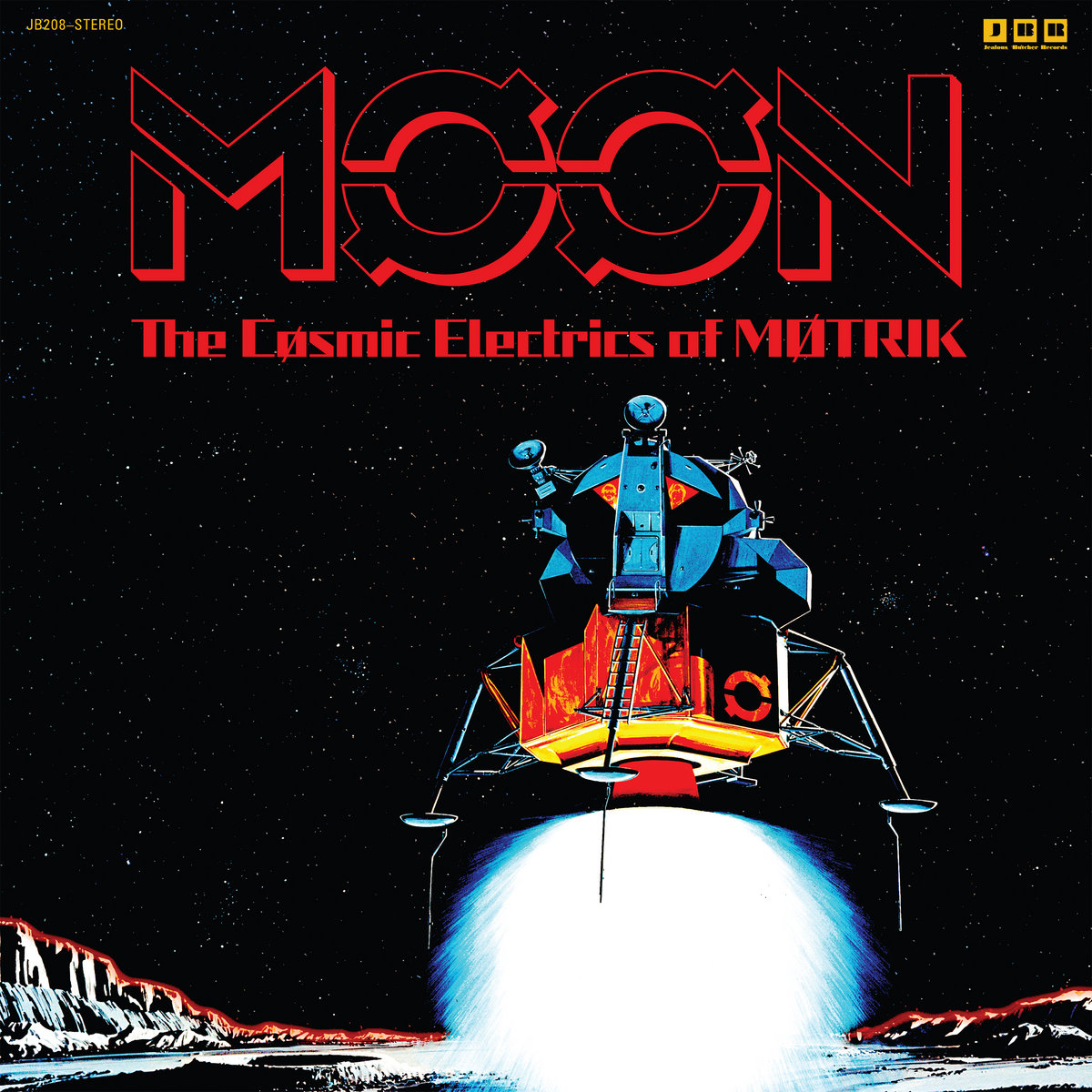 The latest from Portland, Oregon's appropriately named M√∏trik consumed me in seconds, dragging my earholes down into a kosmische pool before spitting me into outer space. Thankfully, it was a pleasantly symbiotic relationship for me, a journey I enjoyed taking into M√ò√òN: The Cosmic Electrics of M√òTRIK. While M√∏trik may not yet stand alongside their elders in the history books, each of its practiced members form a tight rhythm section of bass and drums, knowing exactly when to lay on the space by way of thick layers of distortion and when to visit more ethereal territory.
The latest from Portland, Oregon's appropriately named M√∏trik consumed me in seconds, dragging my earholes down into a kosmische pool before spitting me into outer space. Thankfully, it was a pleasantly symbiotic relationship for me, a journey I enjoyed taking into M√ò√òN: The Cosmic Electrics of M√òTRIK. While M√∏trik may not yet stand alongside their elders in the history books, each of its practiced members form a tight rhythm section of bass and drums, knowing exactly when to lay on the space by way of thick layers of distortion and when to visit more ethereal territory.
Prime examples of the band's namesake include "Streamline," "Space Elevator," and "Stabilize," while personal favorite "Red Eye" is practically a dancefloor thumper. While the album is heavy on German-style kosmische rock, there are elements of Berlin-School scattered throughout (closing track "Sonik Rug" sounds eerily like an early Vangelis song). Treated vocals are limited in favor of extended, hypnotic rhythms, with no track shorter than five minutes, the longest clocking over 14 minutes.
The progression from Møtrik's prior albums has me paying attention. MØØN is a wonderful modern take on kosmische music, and I'm genuinely excited to see where they take things.
Samples can be found here.
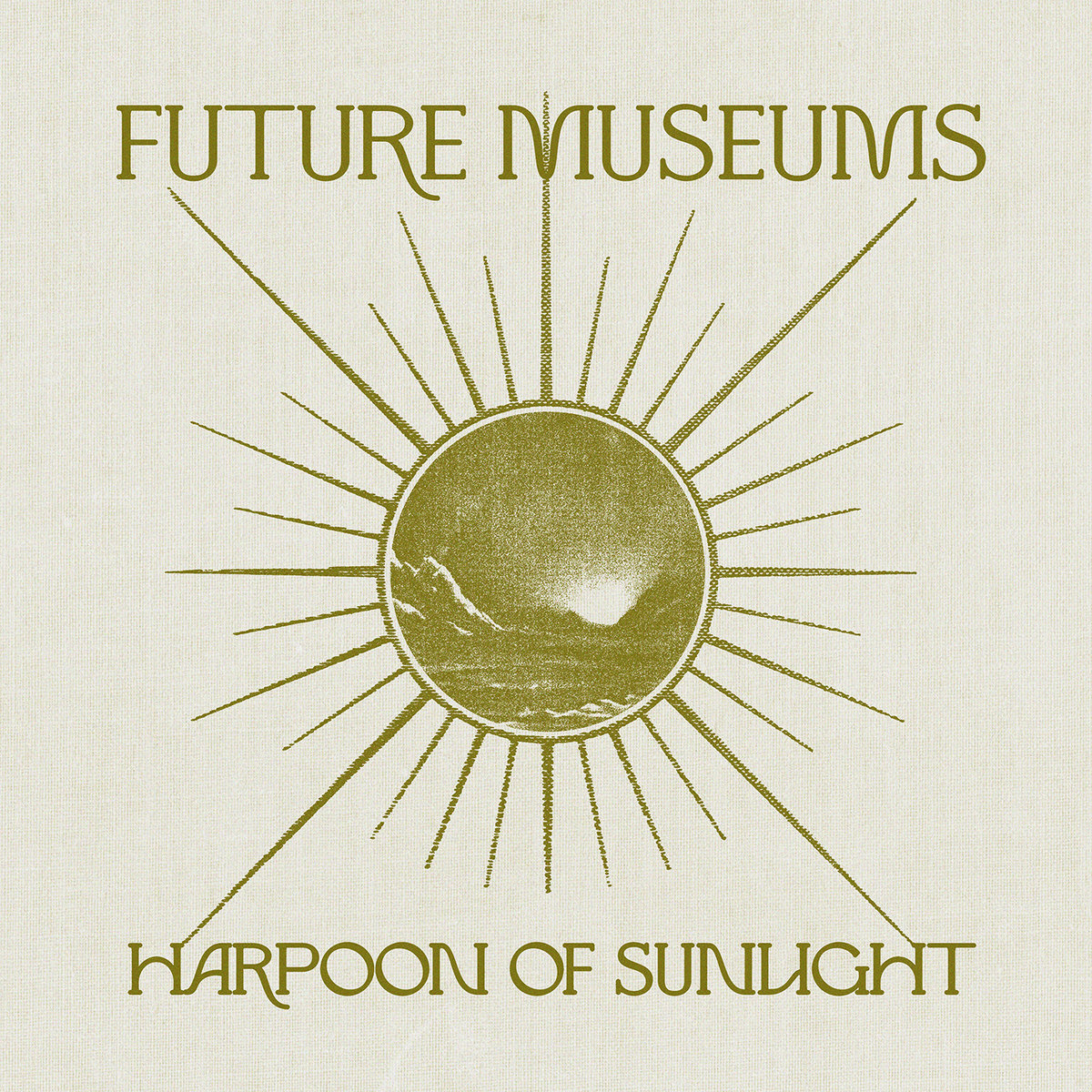 "Harpoon of Sunlight" sees Neil Lord's project Future Museums releasing on Austin label Aural Canyon, a label whose tagline reads "Deep listening for the new, now age." While Lord also releases on Holodeck, the switch is appropriate for his latest, a work initially conceived as "an hour and a half long album exercising patience and repetition," of which the most melodic portions were pressed to the first vinyl release for both the artist and label. Recorded in quarantine in 2020, the resulting album reflects the intense Texas summer heat, alternating between warming and traumatic, interrupted only by cooler evening breezes that serve as a reprieve. Inventive percussive sounds are delicately strewn through atmospheric synths and motorik rhythms, providing a balance between hard and soft, and hot to cool, serving as an aural respite for the challenges of the past couple of years.
"Harpoon of Sunlight" sees Neil Lord's project Future Museums releasing on Austin label Aural Canyon, a label whose tagline reads "Deep listening for the new, now age." While Lord also releases on Holodeck, the switch is appropriate for his latest, a work initially conceived as "an hour and a half long album exercising patience and repetition," of which the most melodic portions were pressed to the first vinyl release for both the artist and label. Recorded in quarantine in 2020, the resulting album reflects the intense Texas summer heat, alternating between warming and traumatic, interrupted only by cooler evening breezes that serve as a reprieve. Inventive percussive sounds are delicately strewn through atmospheric synths and motorik rhythms, providing a balance between hard and soft, and hot to cool, serving as an aural respite for the challenges of the past couple of years.
Leading off with "Hum Body," the percussive elements stand front and center, providing a foundational rhythm offset by ethereal electronics. Lord utilizes his mastery of electronics to deliver depth and expanse throughout, using sustained notes and sound manipulation to encourage a deep listening experience. While the album is solid as a whole, some of the results are more penetrating than others, particularly on "Earthside" and the title track. In "Earthside," Lord guides us through rolling waves of gently undulating sound, encouraging immersion by providing a rich soundscape of melody, moving up and down a scale of notes interspersed by worldly and otherworldly sounds. "Harpoon of Sunlight" appears as a stab of sound warmth, building in intensity, driven by a heart-wrenching melody that builds into a grandiose finish, all the while capturing the feeling Lord is leading his listeners higher and higher into the sky. It's almost as if one can feel the sunlight sparkling on leaves.
Closing track "Morning Reception" is another standout track, a worthy conclusion to an album that serves to guide the listener metaphorically through the night and out into the light. What better way to express movement from dark to light than through an aural expression of greeting a fresh new day? The prolific Lord surely has more up his sleeve; I've yet to be disappointed in any Future Museums release. May this wonderful album bring his name further into the light.
Samples can be found here.
 Montreal's Yoo Doo Right, aptly named after a very early Can track, are absolutely about that vibe; one doesn't need to be a keen listener to catch that early on. However, the band's debut album is not a duplicate of any single kosmische entity but rather a blend of each best. They have been doing their homework, revealing a deep respect for the genre. Their debut "Don't Think You Can Escape Your Purpose" provides some of the best modern space rock released this year, filled with motorik rhythms and atmospheric guitars backed by solid bass lines. The music feels free enough to go off on tangents but always comes back around, fluidly alternating from dreamy fuzz to delicate ambiance before rocking out motorik-style.
Montreal's Yoo Doo Right, aptly named after a very early Can track, are absolutely about that vibe; one doesn't need to be a keen listener to catch that early on. However, the band's debut album is not a duplicate of any single kosmische entity but rather a blend of each best. They have been doing their homework, revealing a deep respect for the genre. Their debut "Don't Think You Can Escape Your Purpose" provides some of the best modern space rock released this year, filled with motorik rhythms and atmospheric guitars backed by solid bass lines. The music feels free enough to go off on tangents but always comes back around, fluidly alternating from dreamy fuzz to delicate ambiance before rocking out motorik-style.
The tracks on "Don't Think You Can Escape Your Purpose" are not jams; if they are, they are genuinely well-constructed. The songs are catchy ear-worms, as is the case for "The Moral Compass of a Self-Driving Car," a track comprised of elements of all the classic Kosmiche riffs strung into a perfect spaced-out dream. The musicians pause as if letting the listener in a little secret, uttering a single repeat phrase: "Back up, you're moving too fast," before kicking it into high gear as if to prove a point, only to pull back into a gorgeous mashup of sonic bliss.
Both sides are nearly perfect, start to finish, with the only weak tracks the first on each side; songs that serve as "intros" into grander sounds. I initially listened to it track by track, identifying standouts, but the album felt satisfying whole after listening end-to-end. The album begins with "A Certain Sense of Disenchantment," sounding like the start to a desert vision quest, a mystical sounding tune that is pleasant enough. Then everything changes with the segue into "1N914," exploding into a blistering wall of sound, with wailing guitars and frenetic drumming, expertly balanced guitar riffs that ebb and flow alongside atmospheric keyboards. From there, things don't let up, ending with the majestically bombastic "Black Moth."
This is one of my favorites this year for this type of headspace; it's a memorable sonic adventure for space cadets. Headphones are optional.
Samples can be found here.



